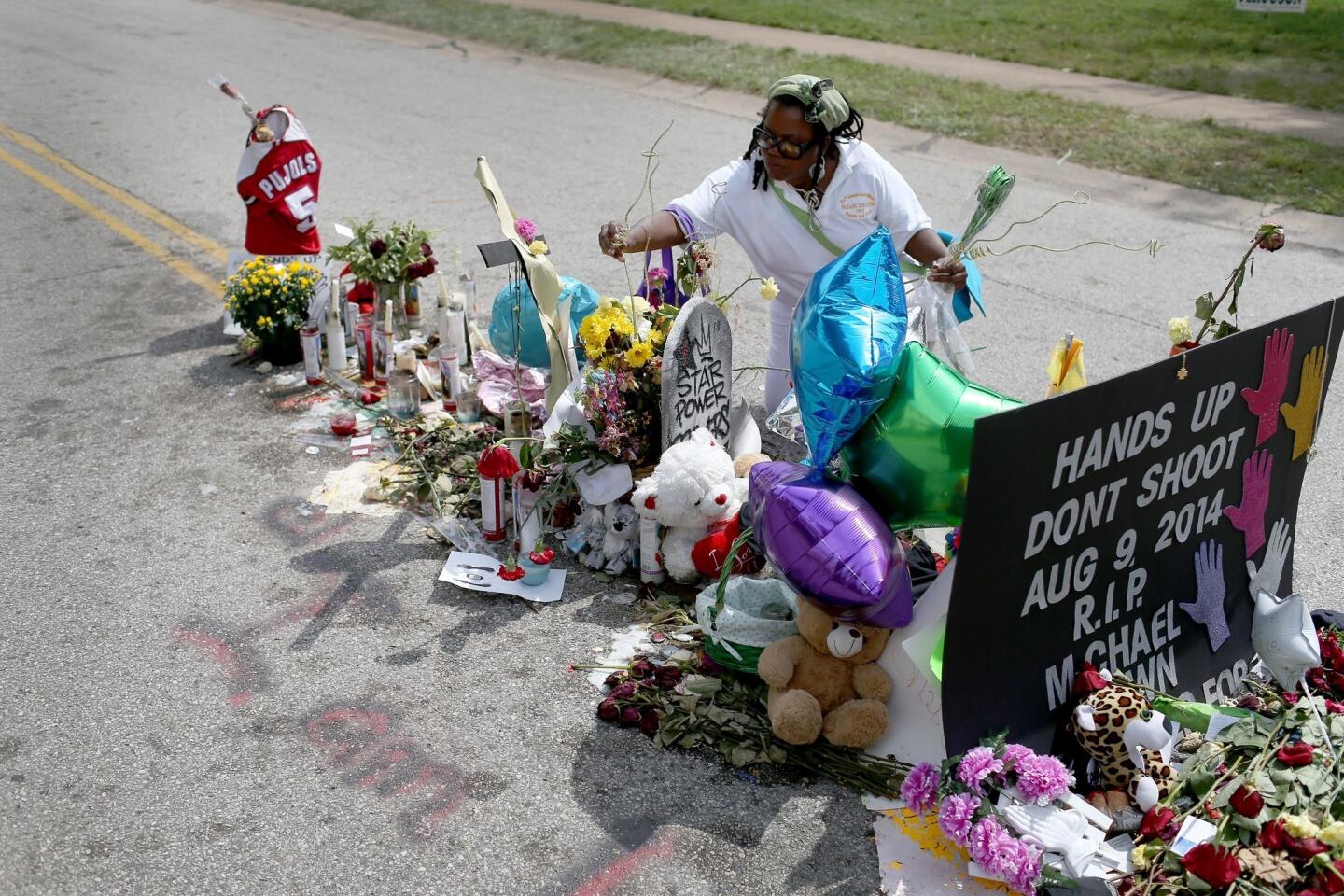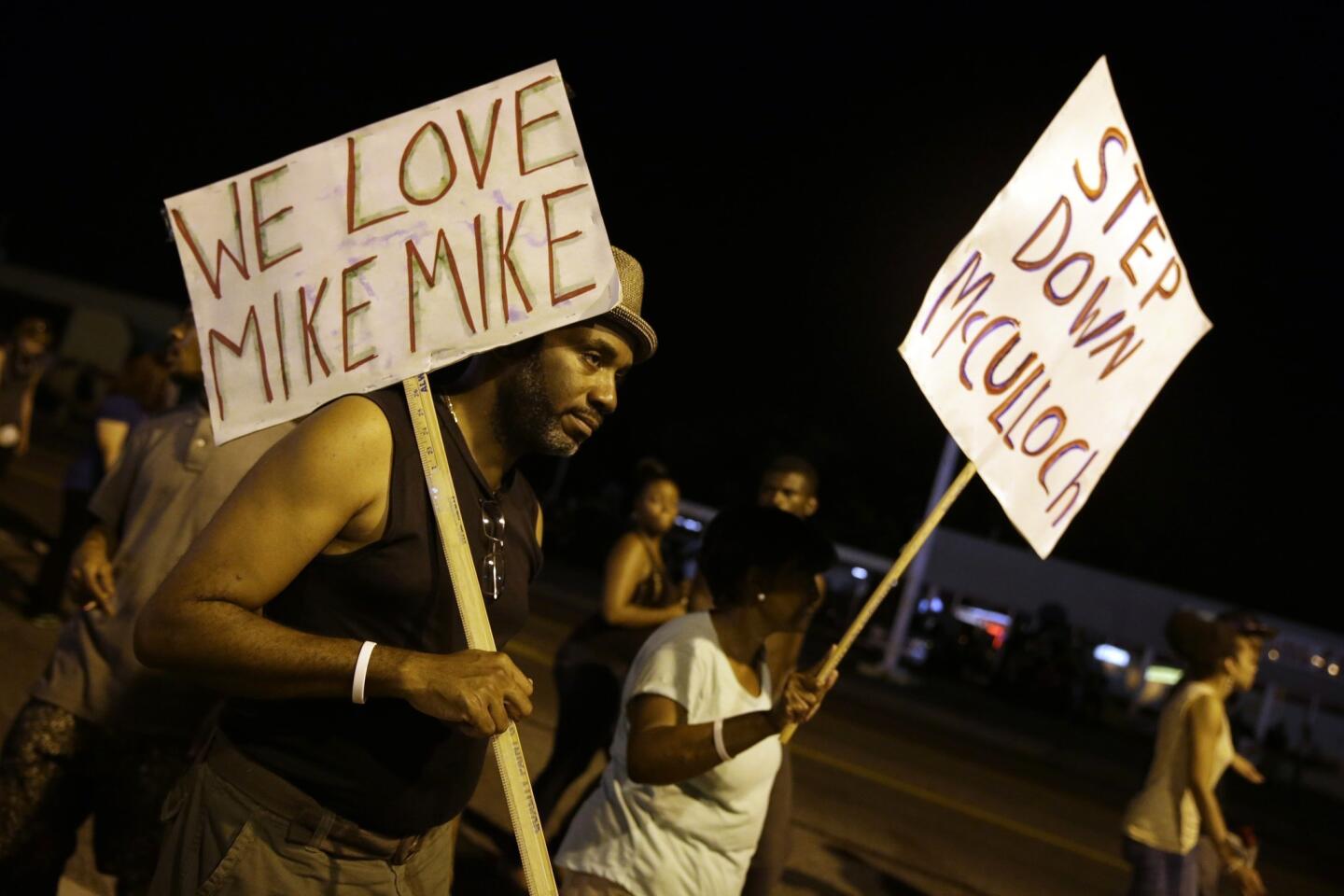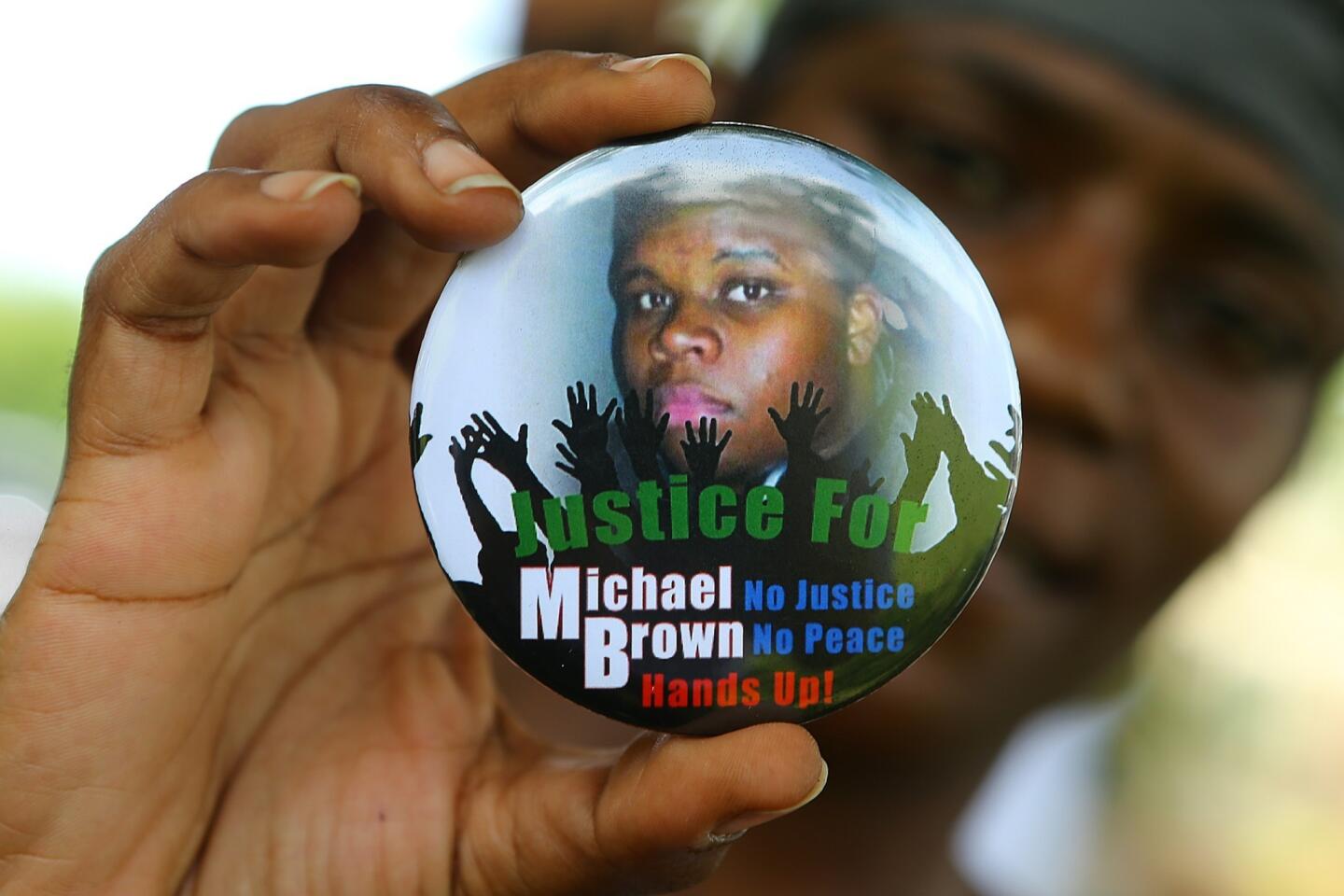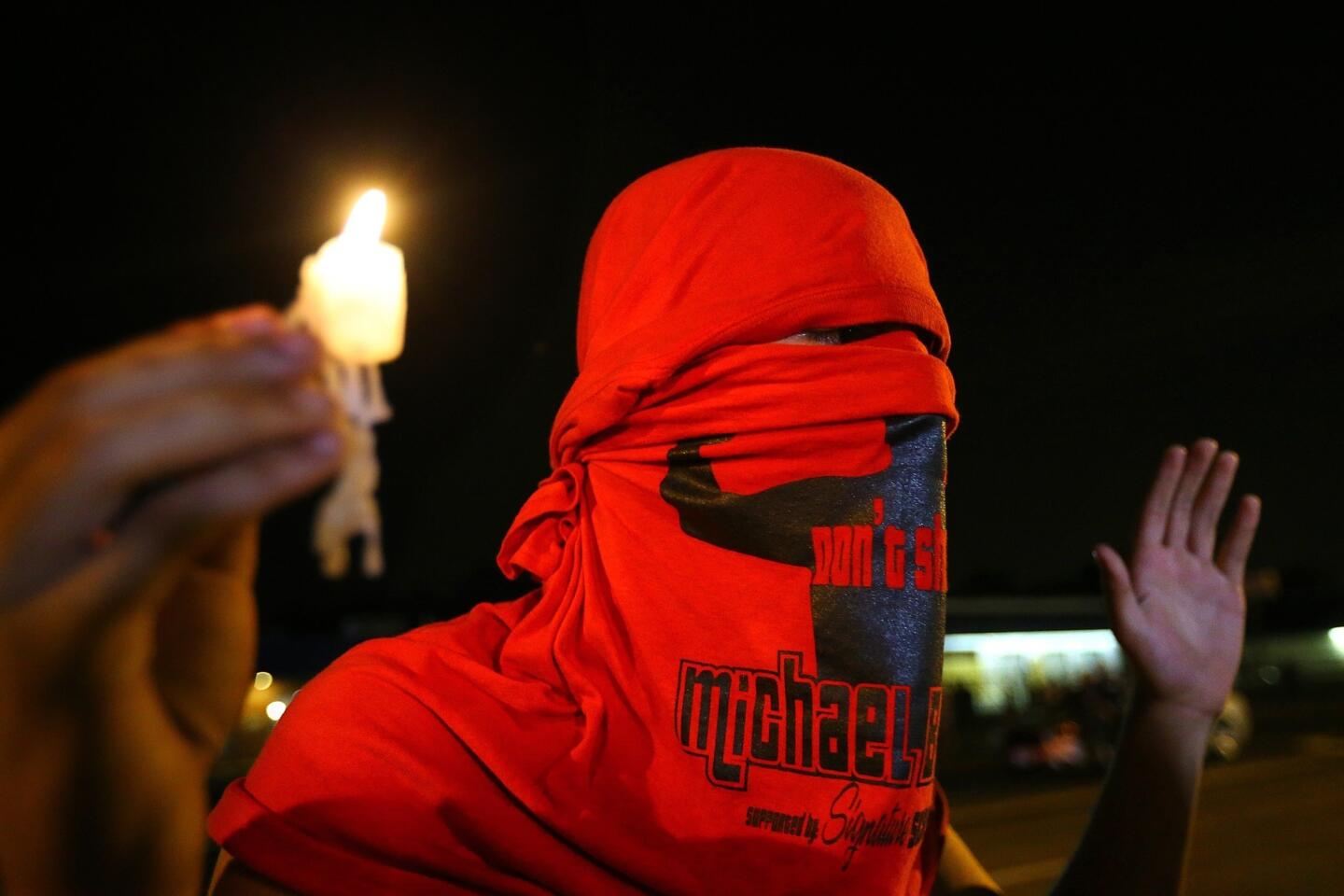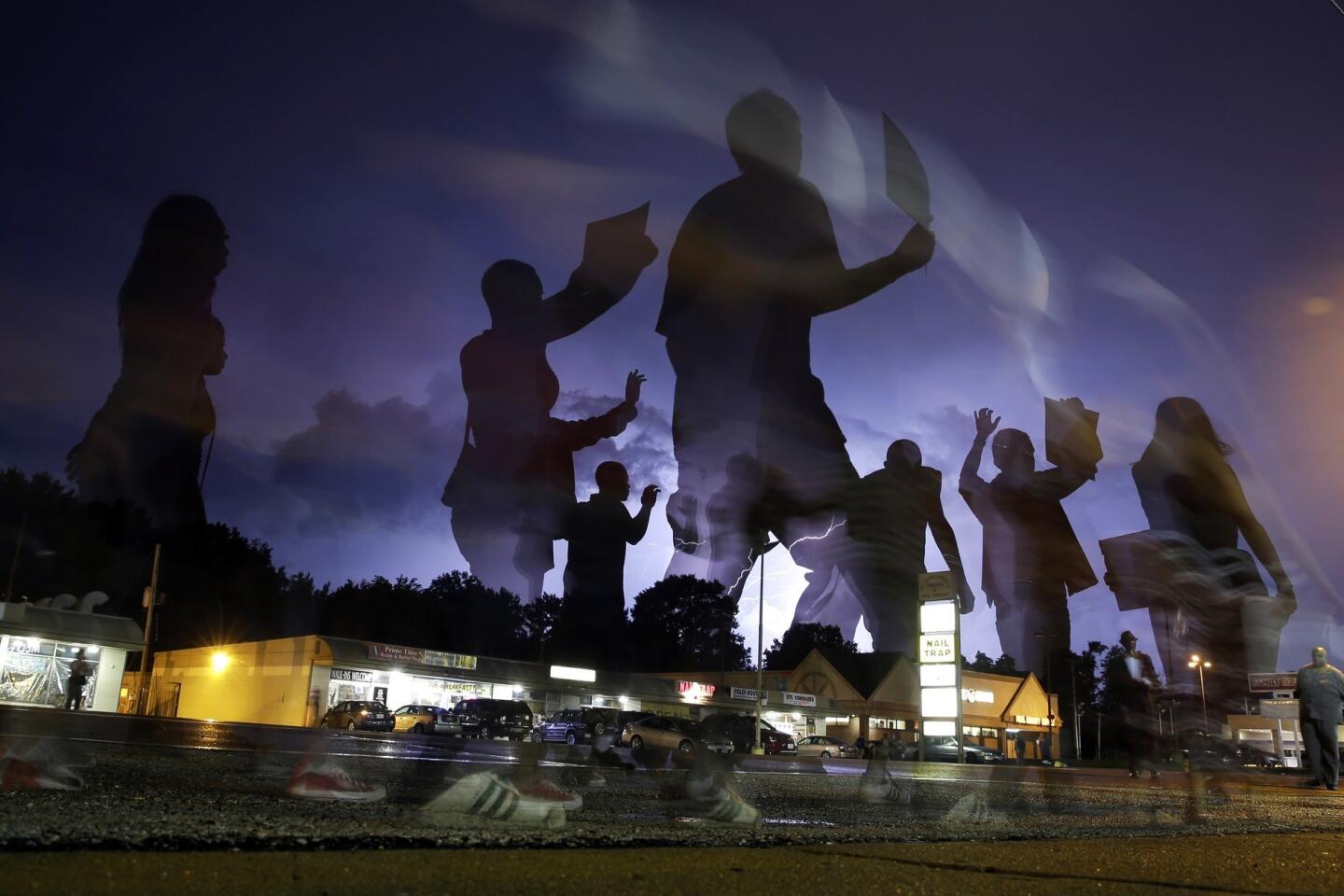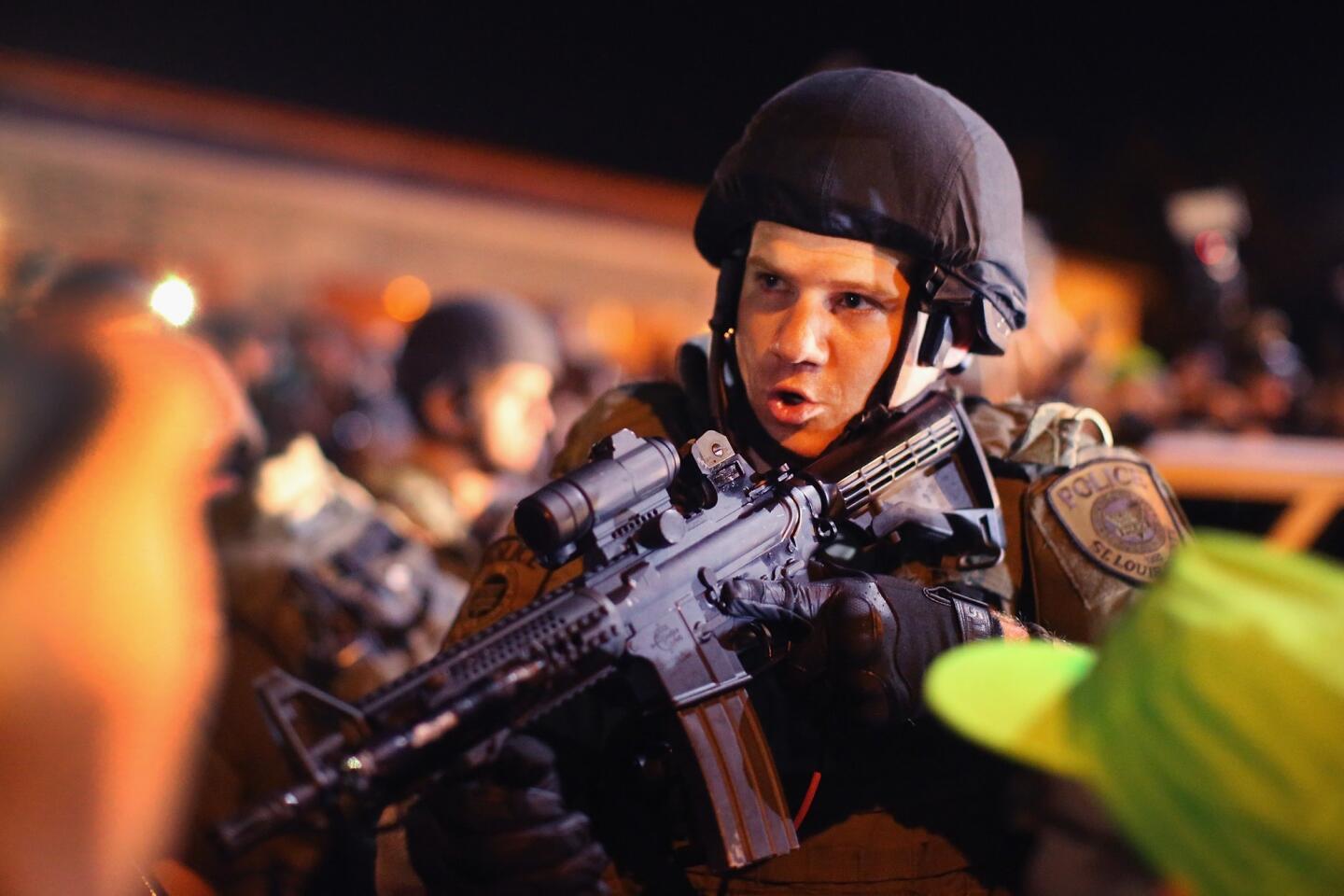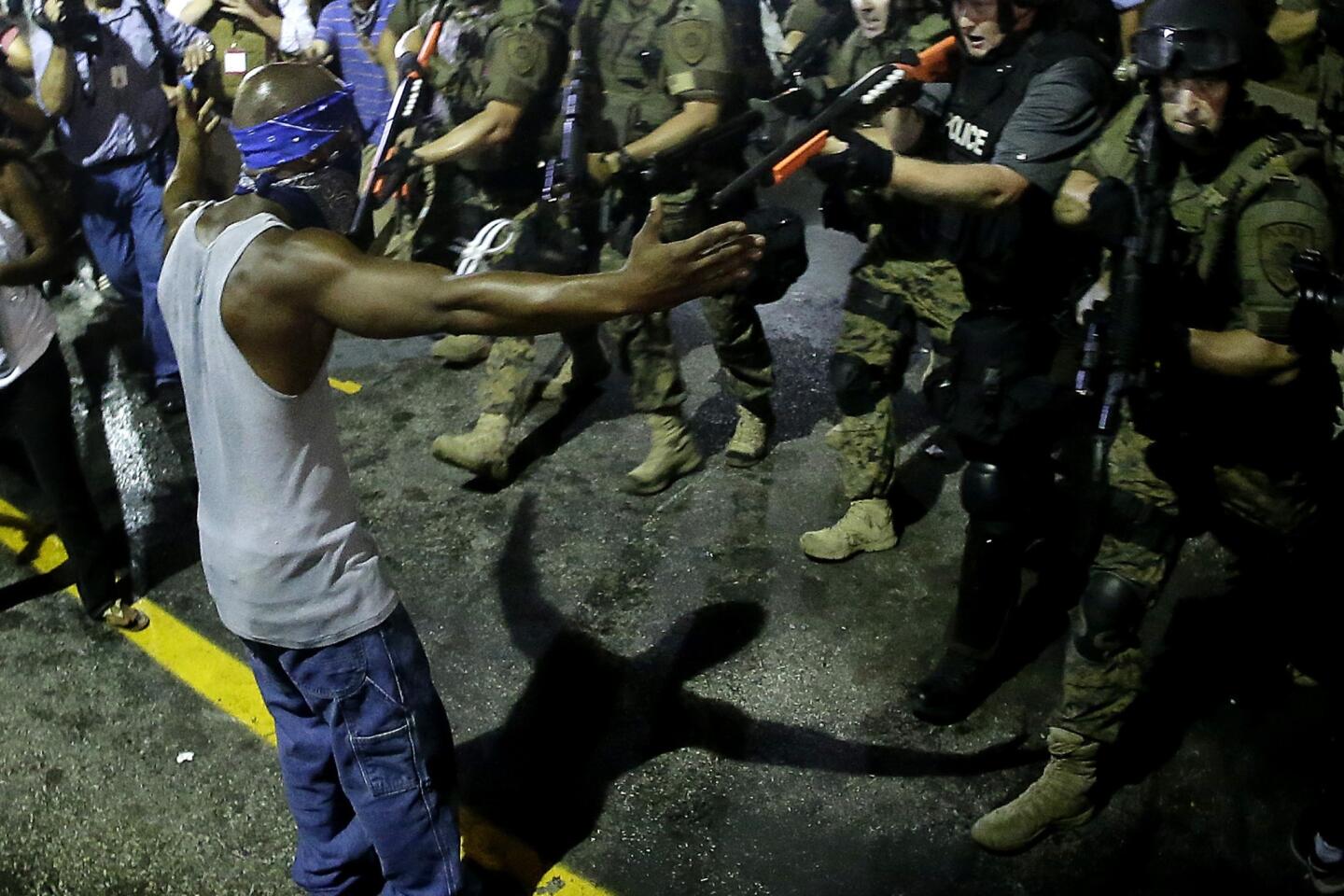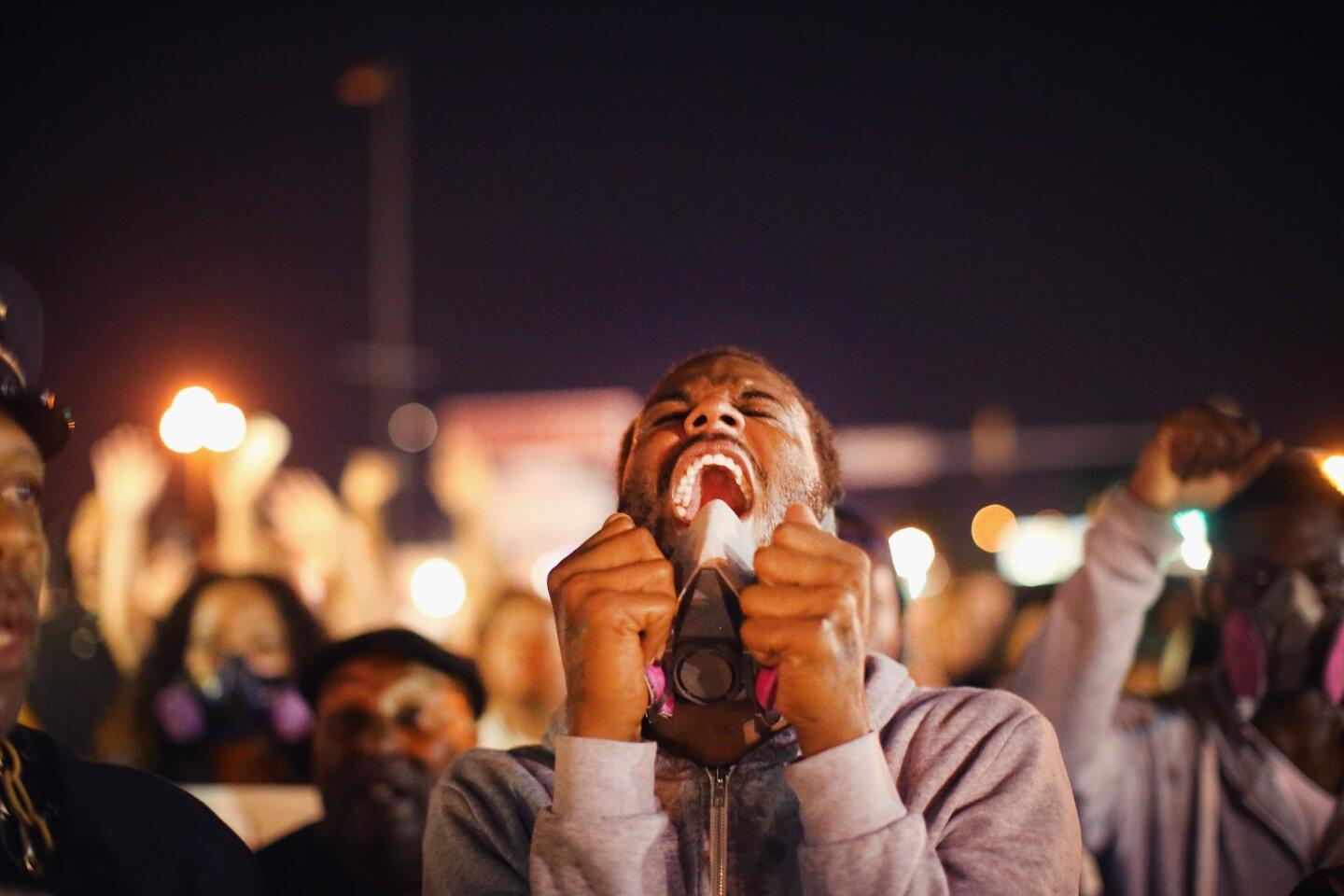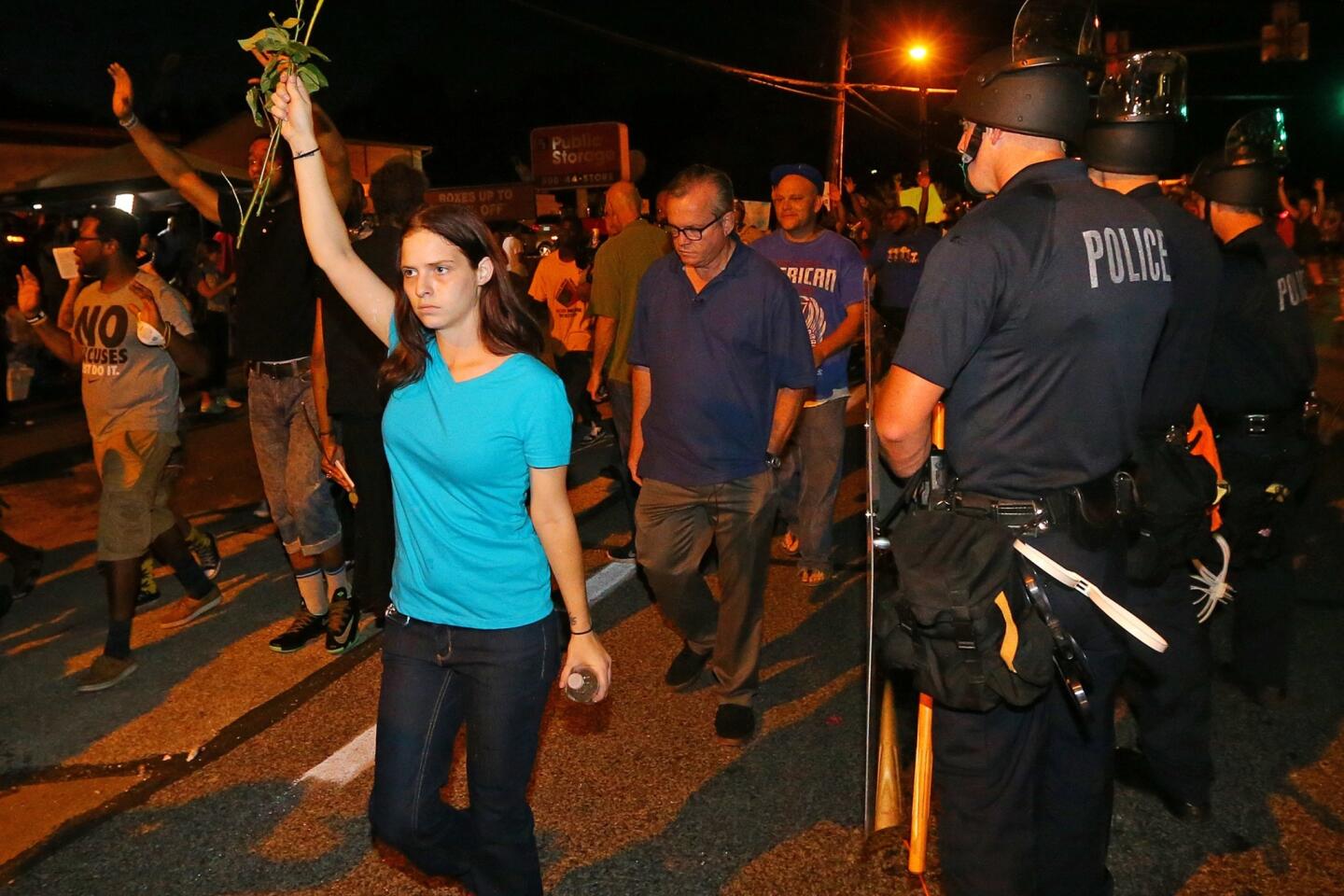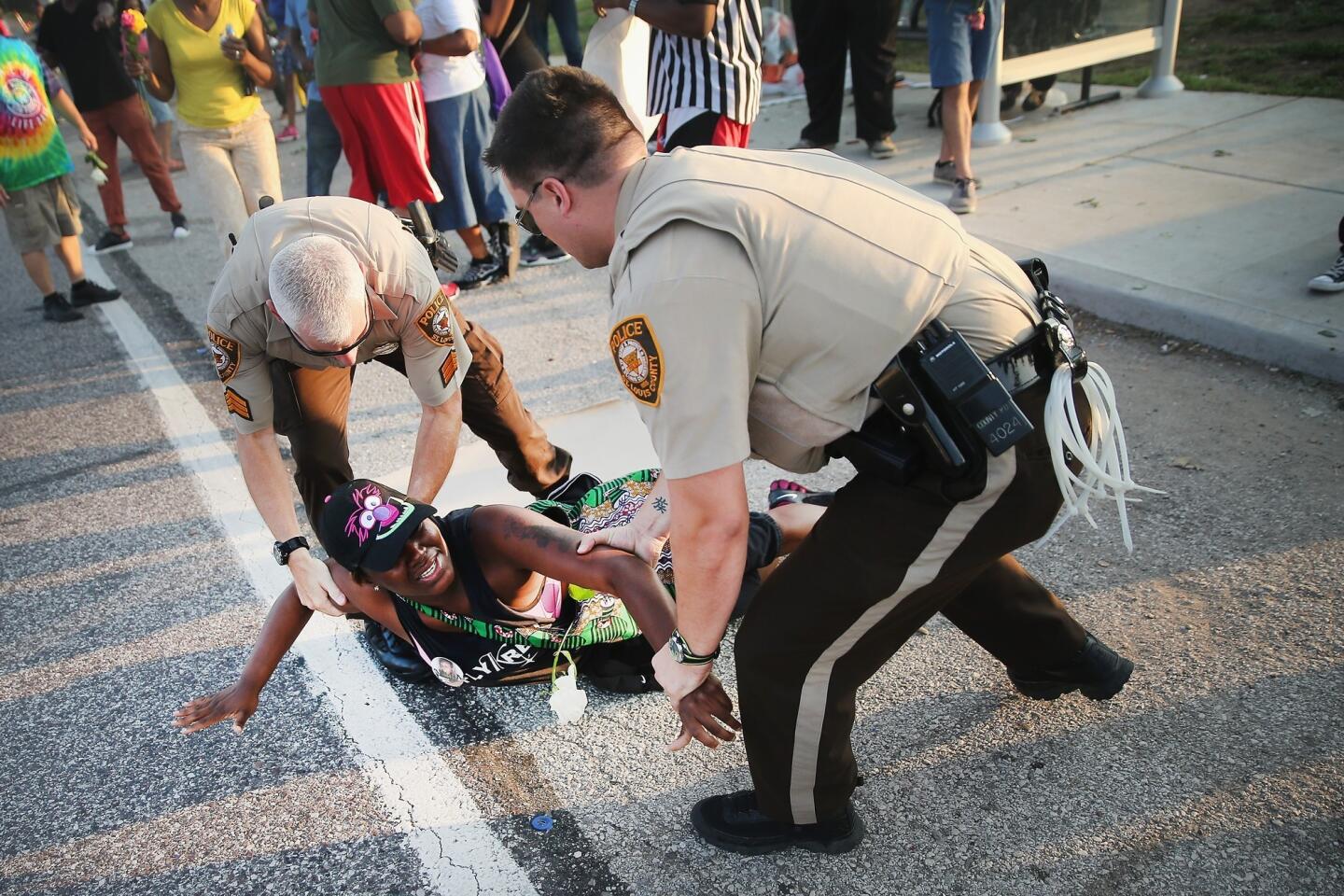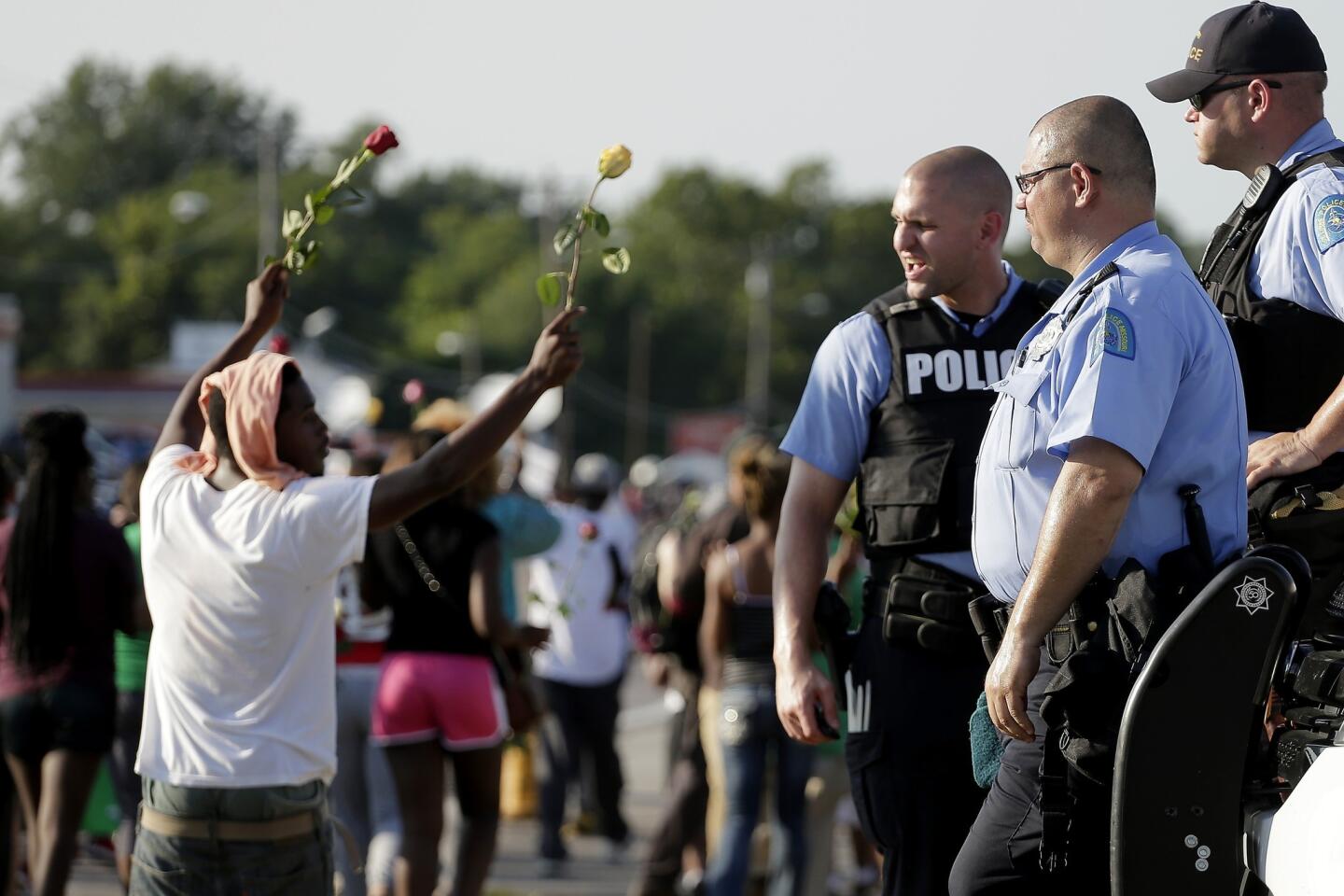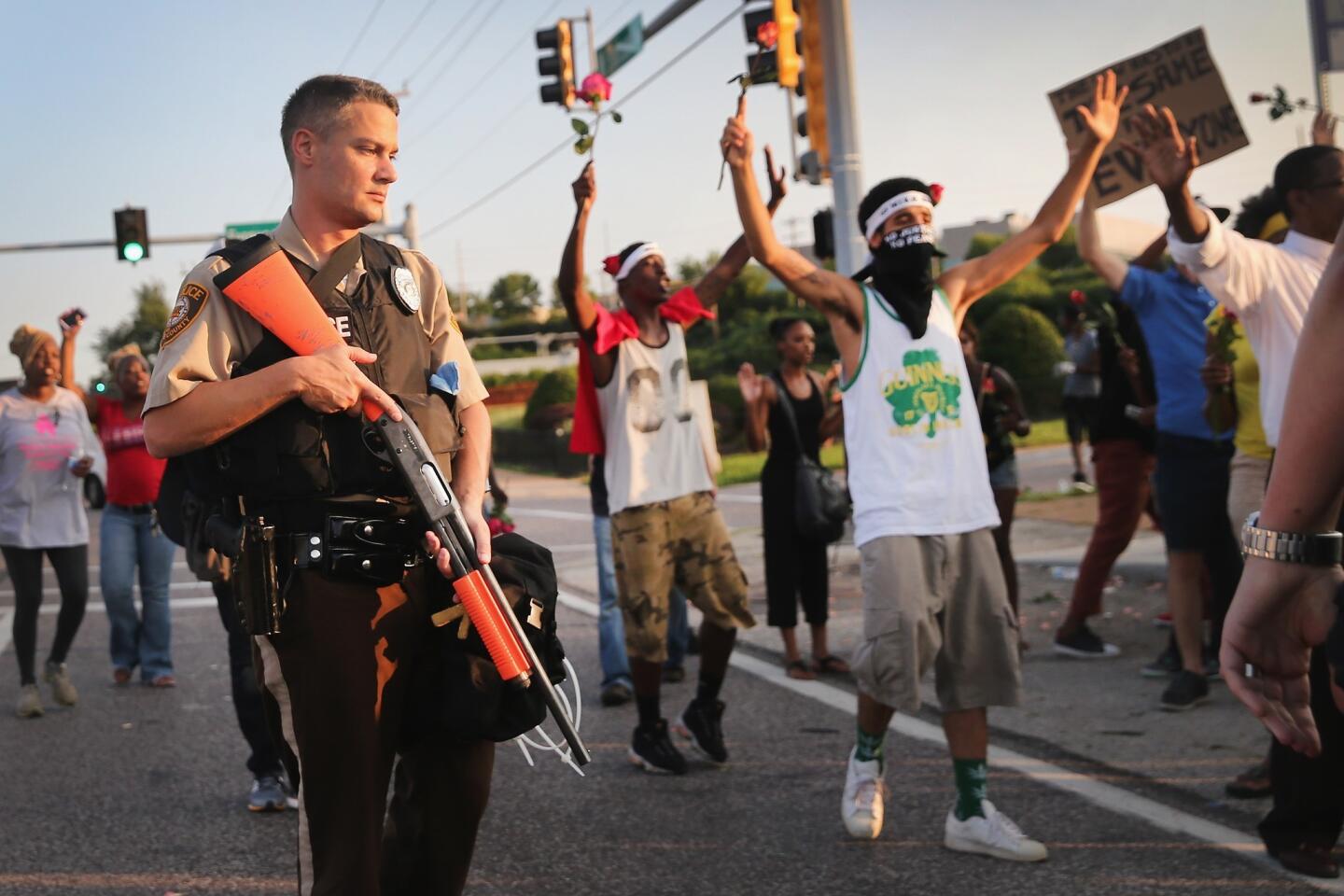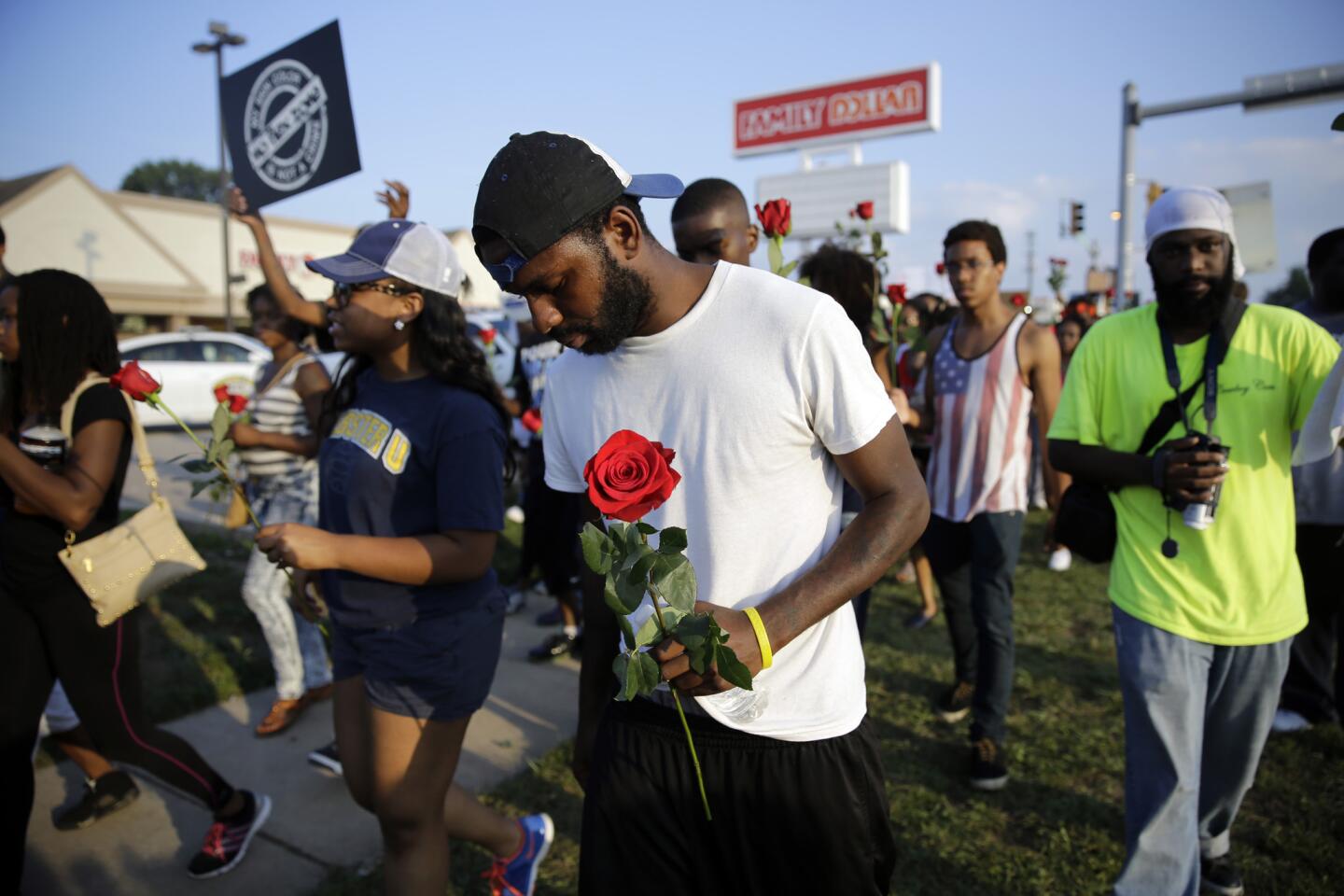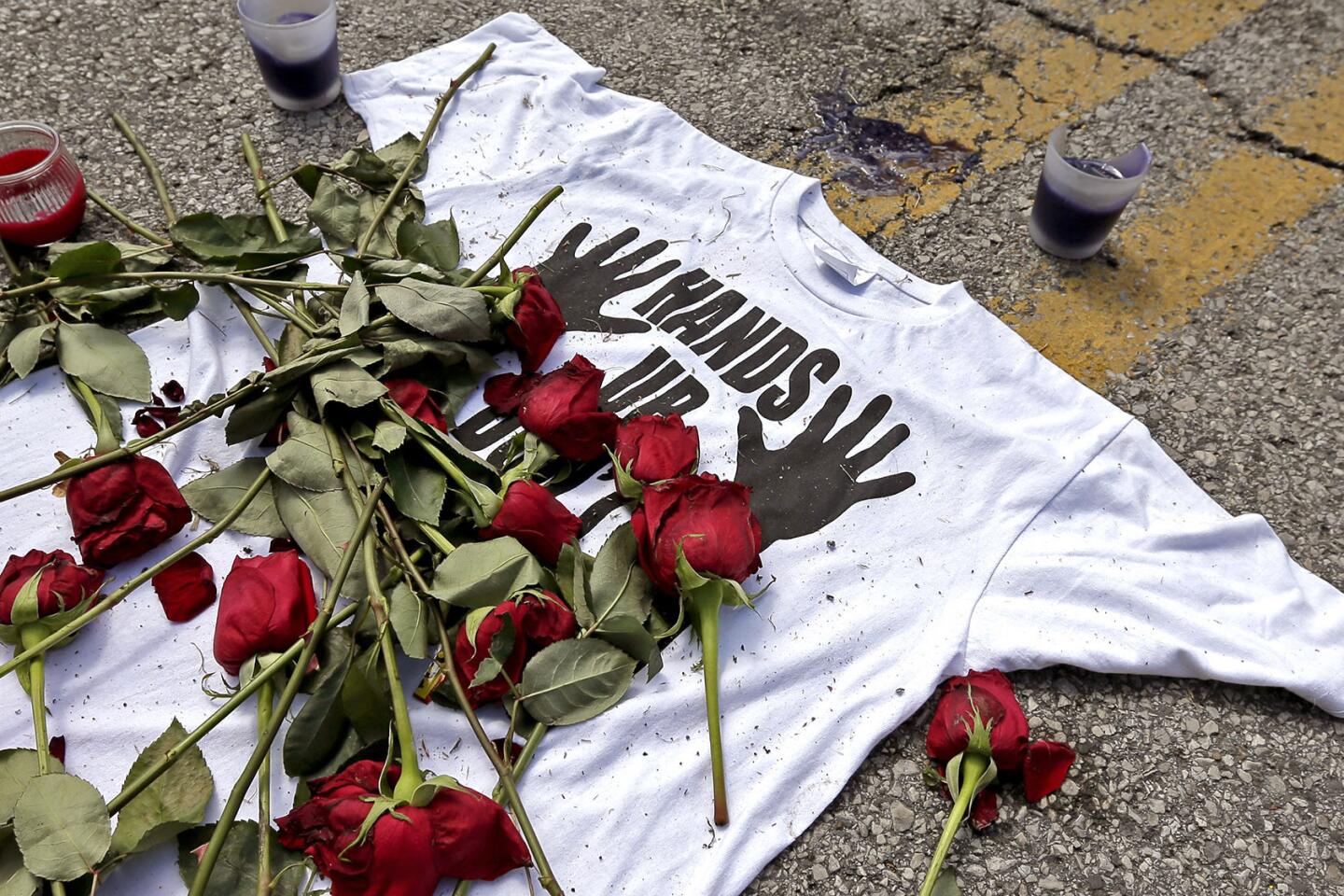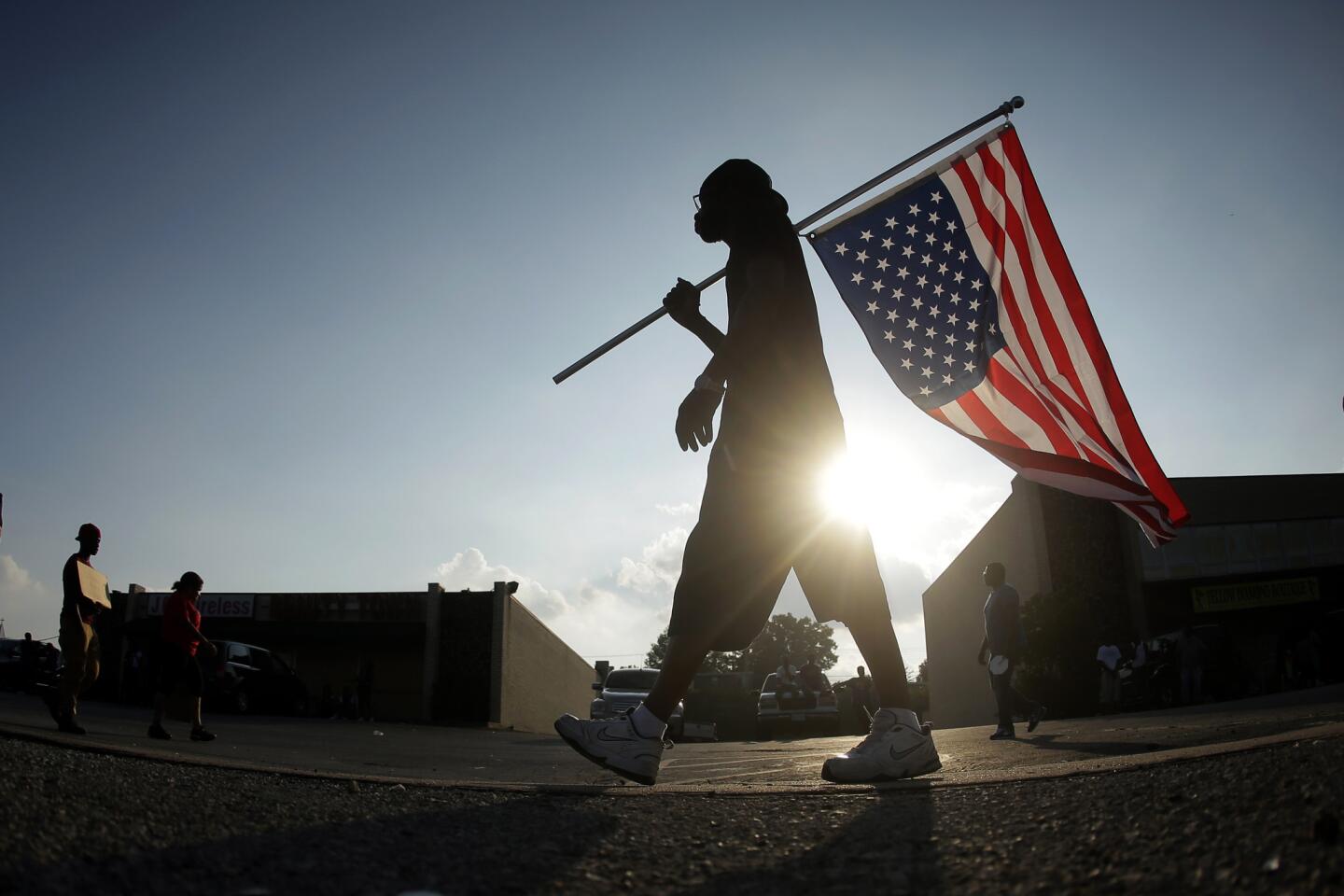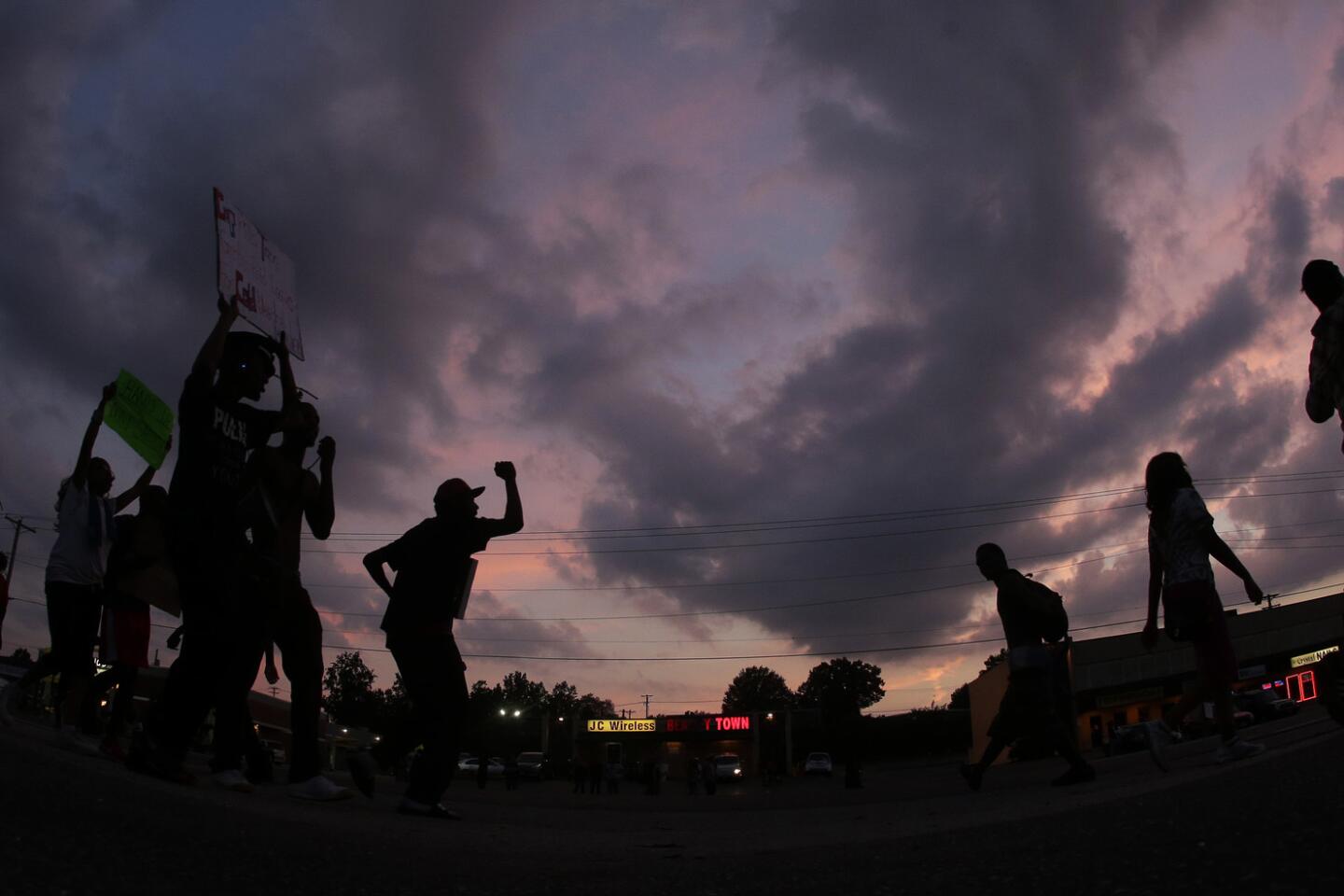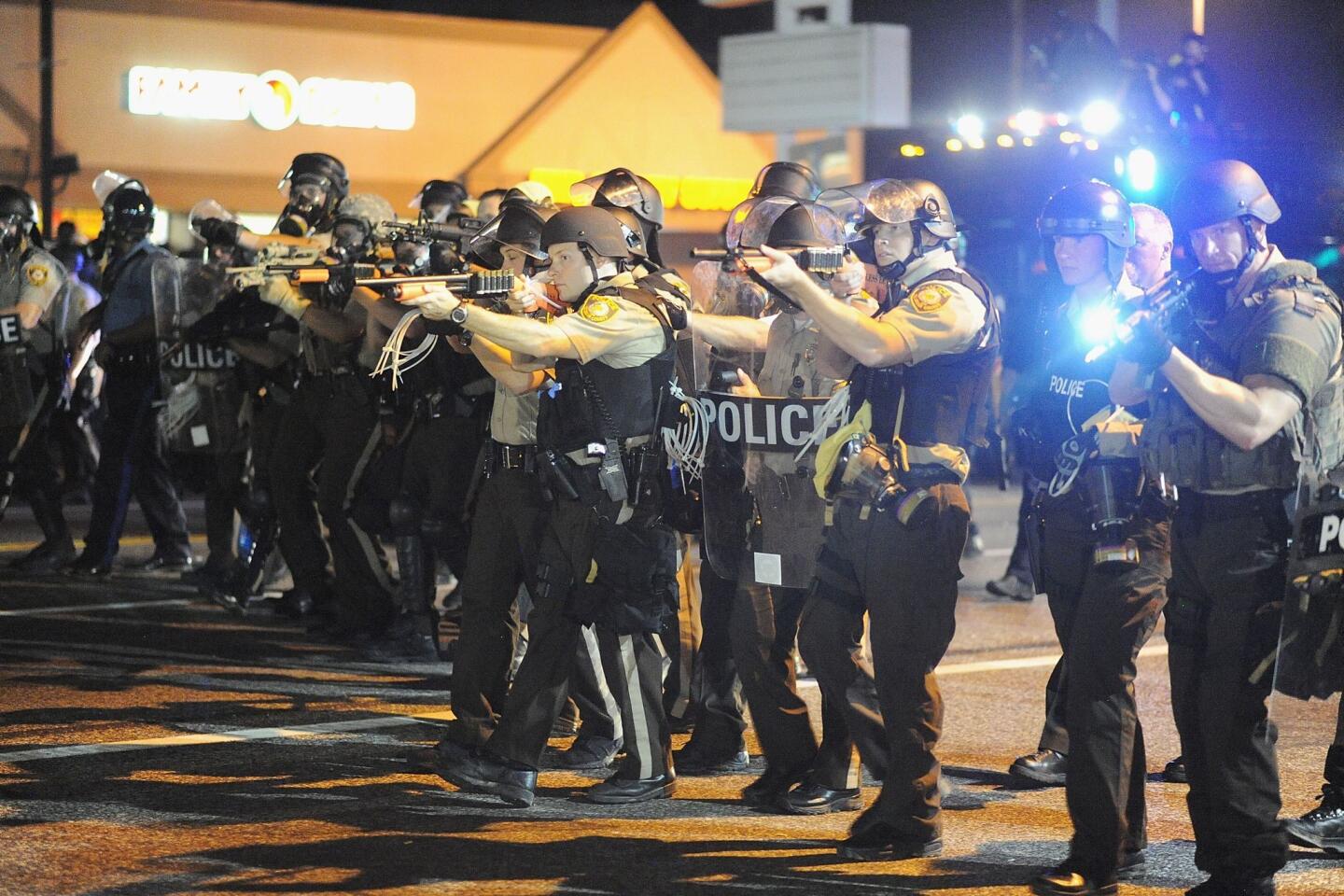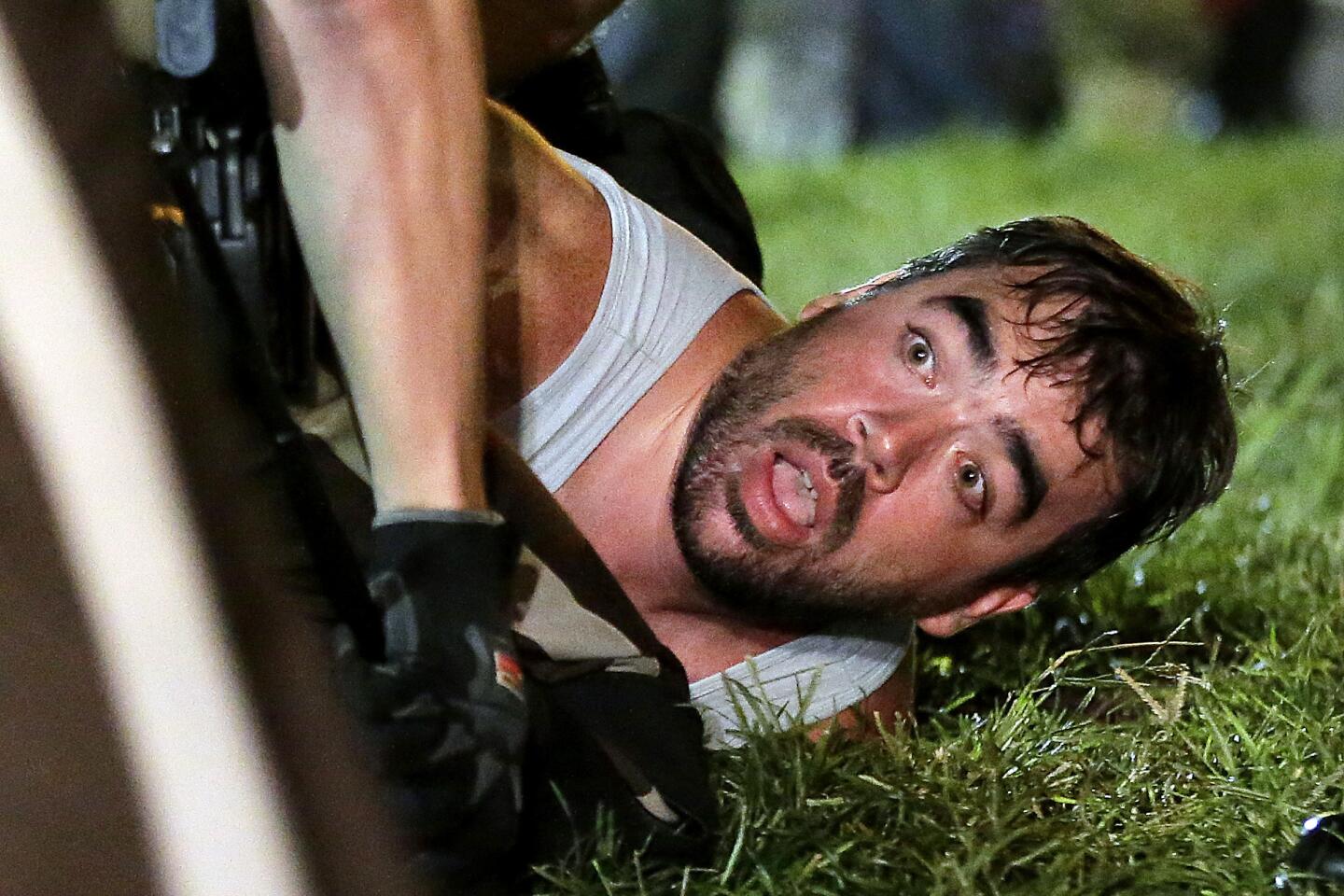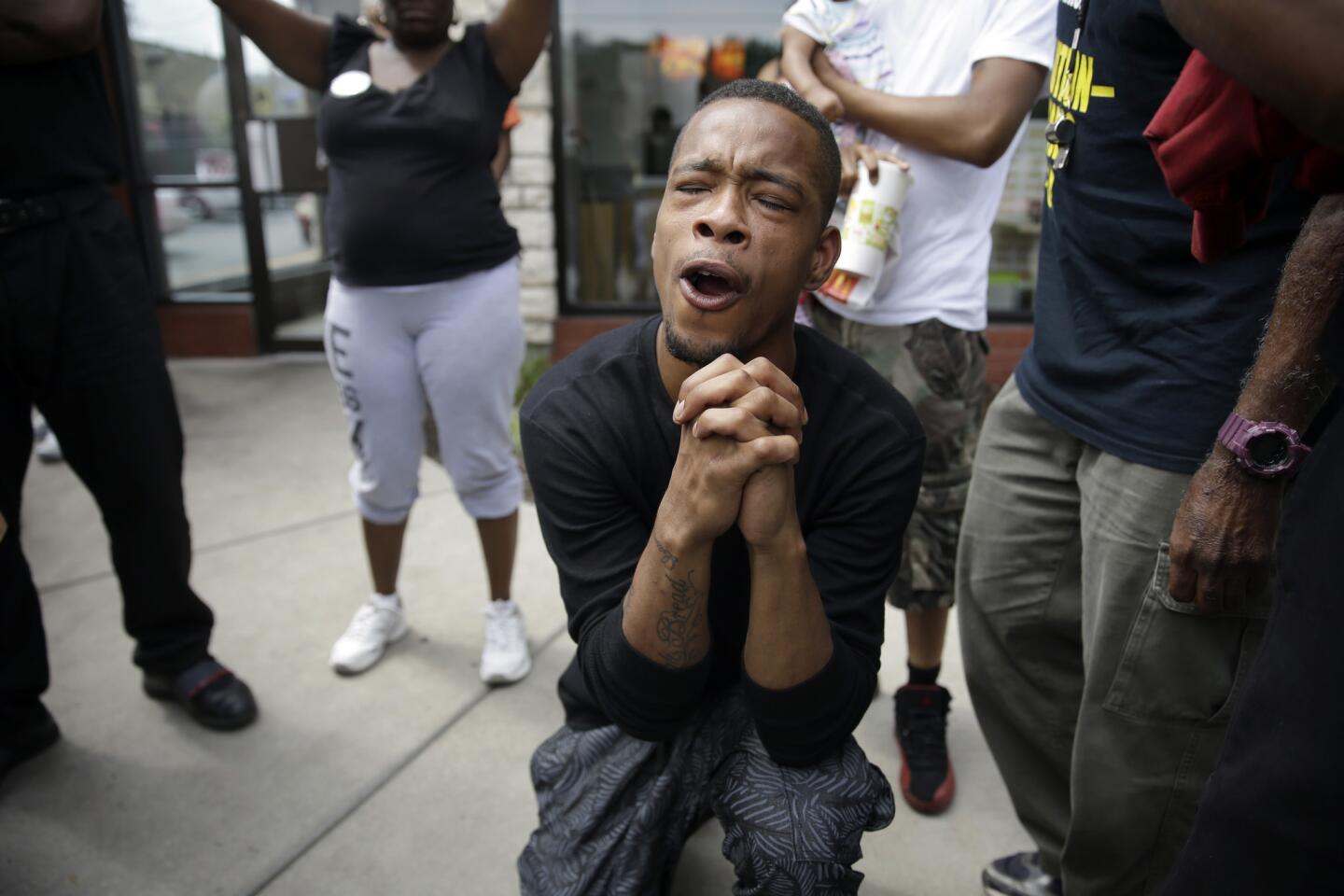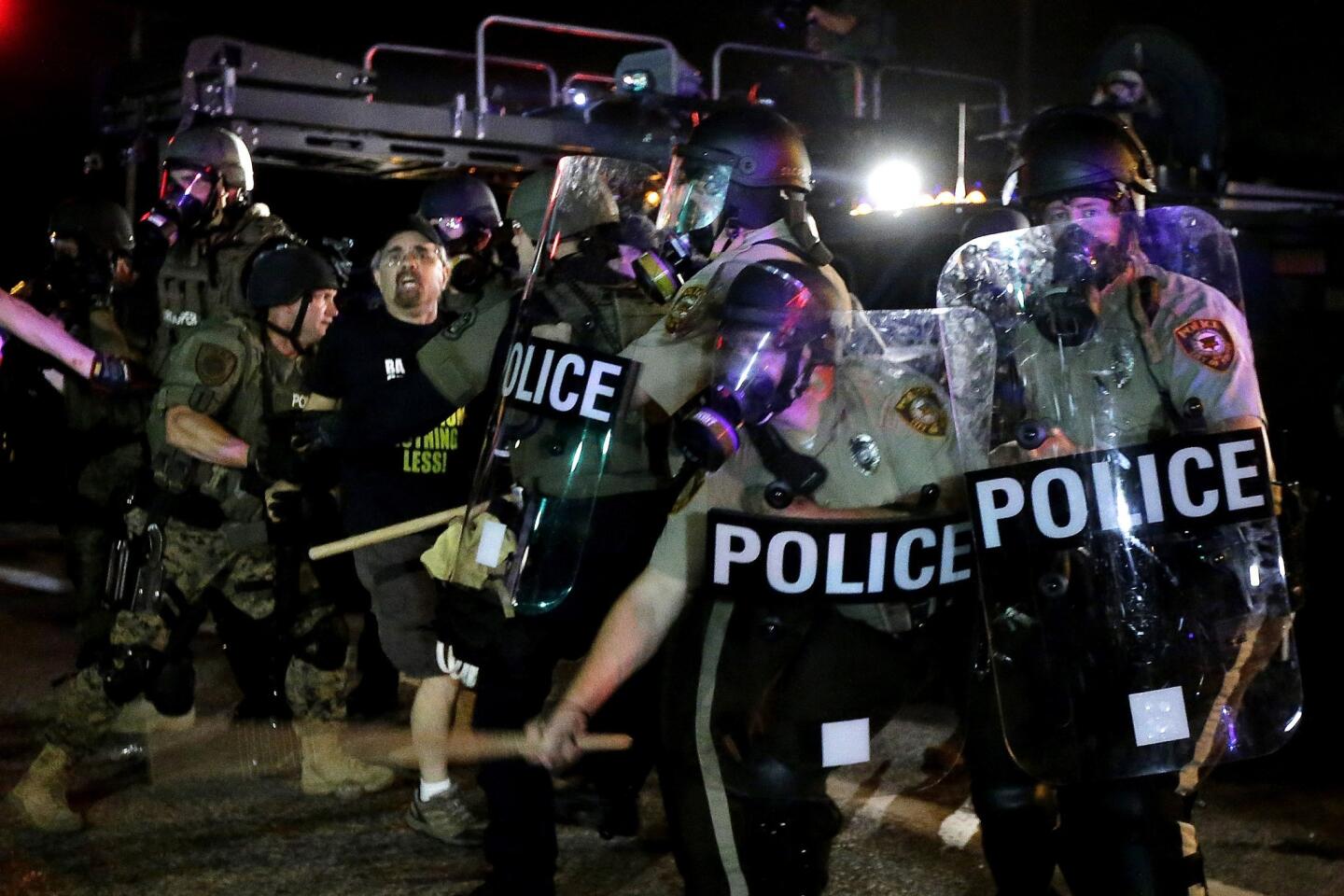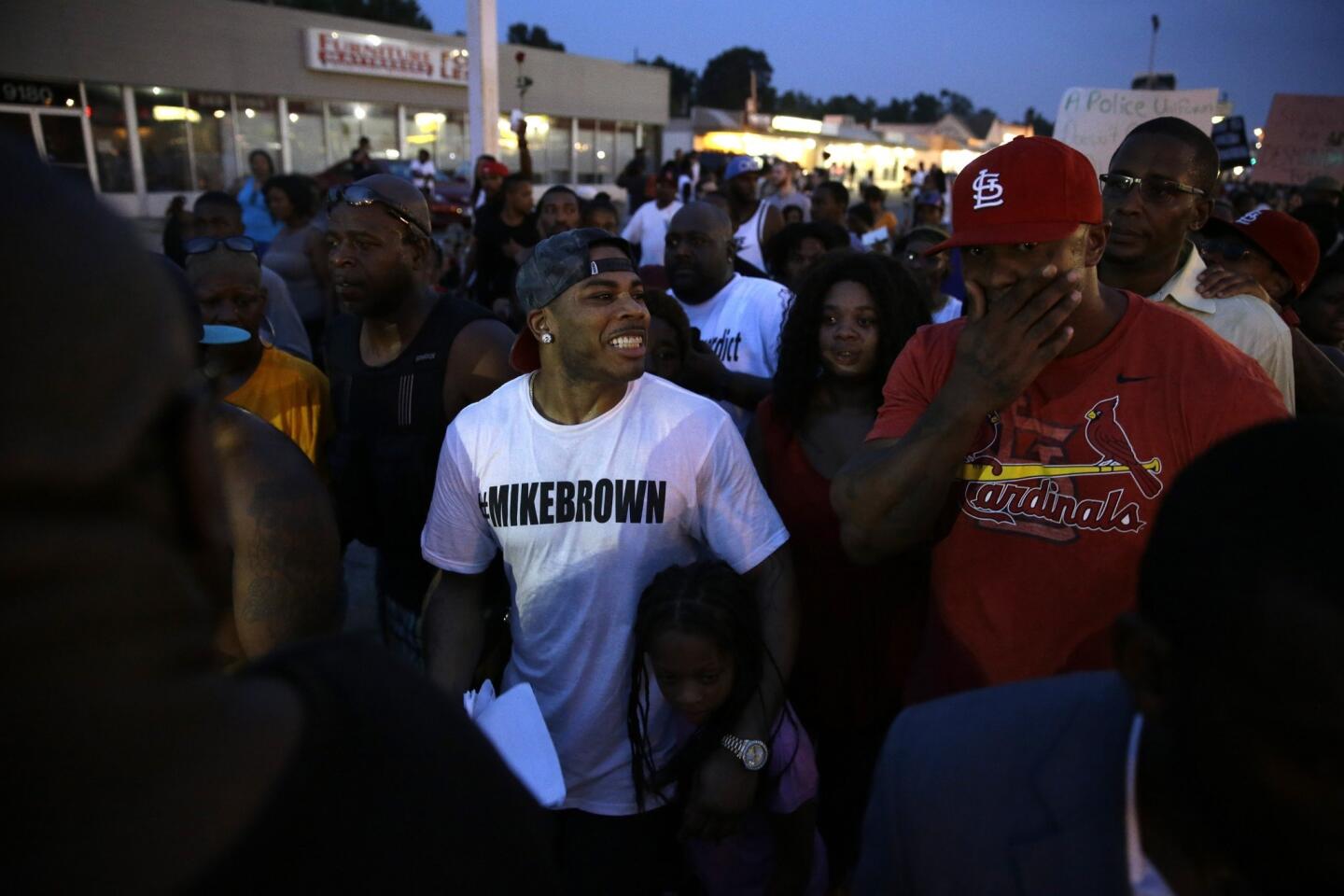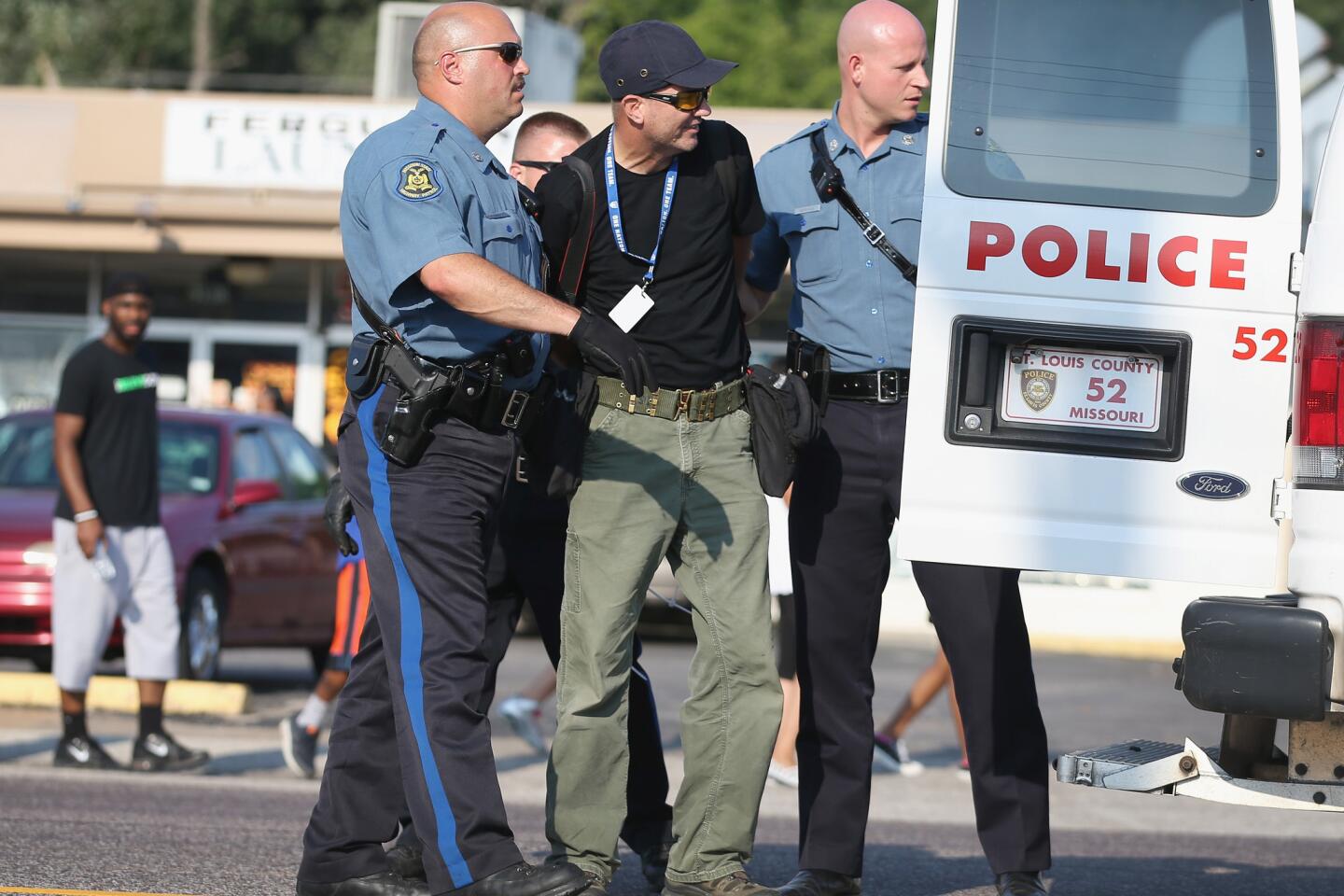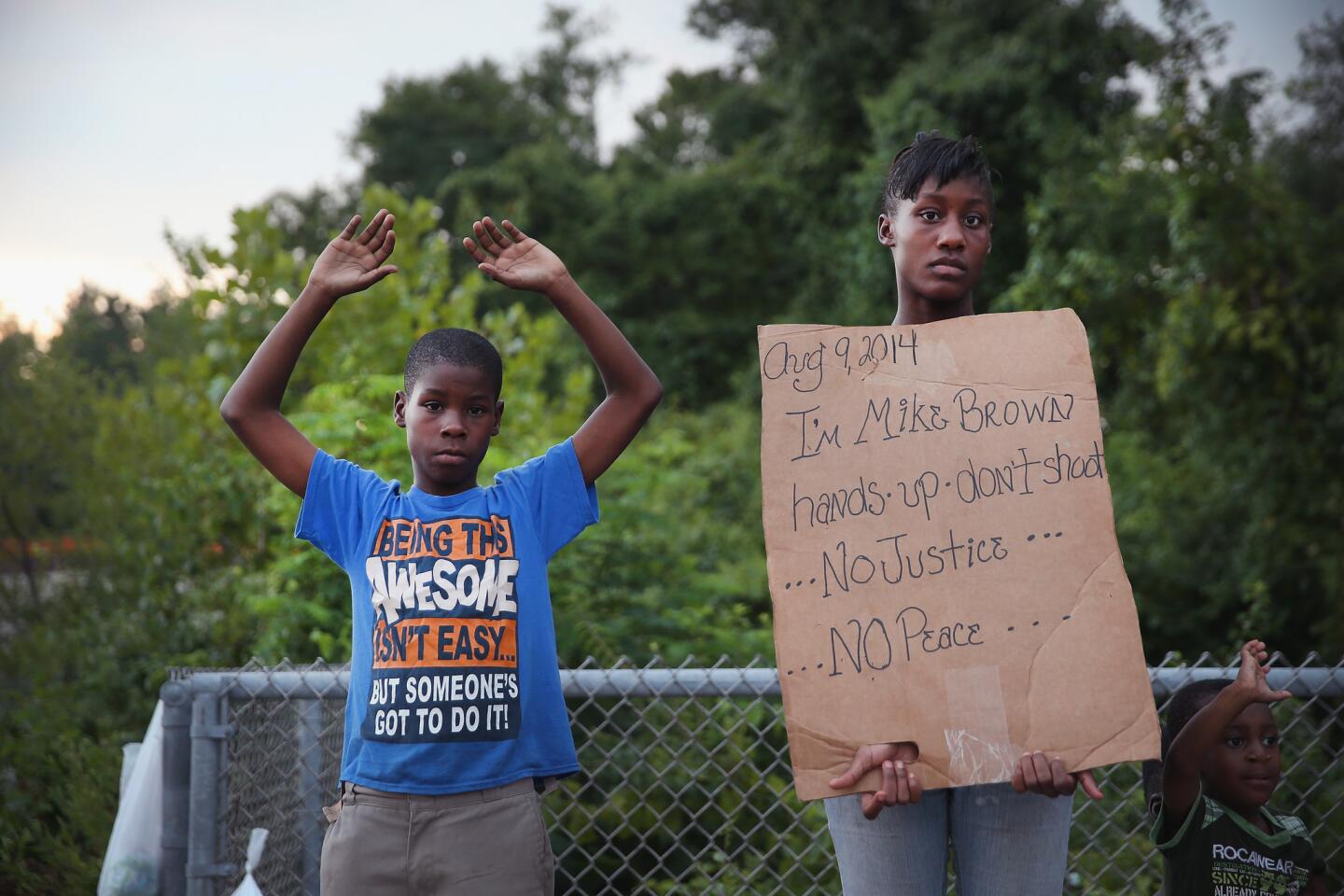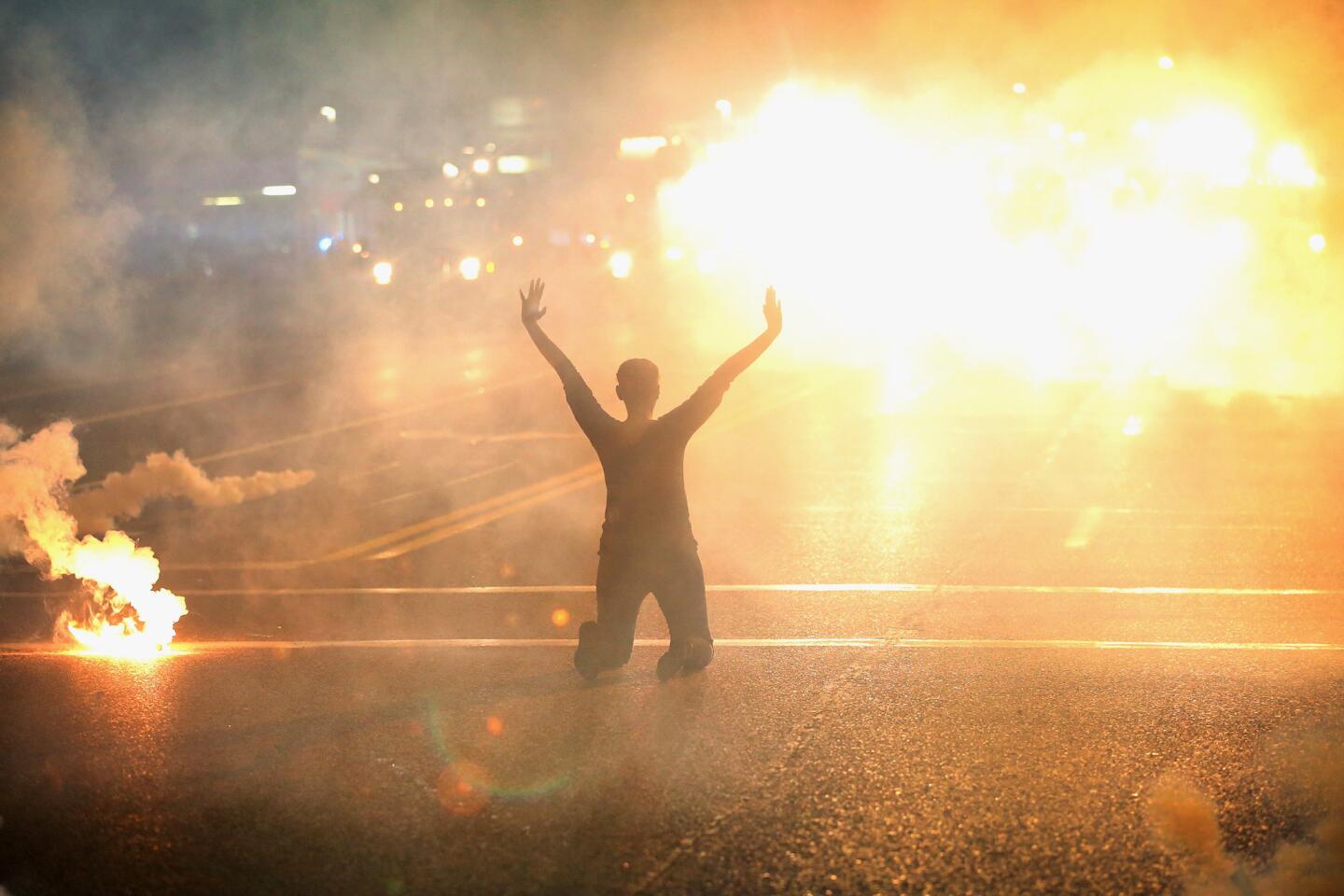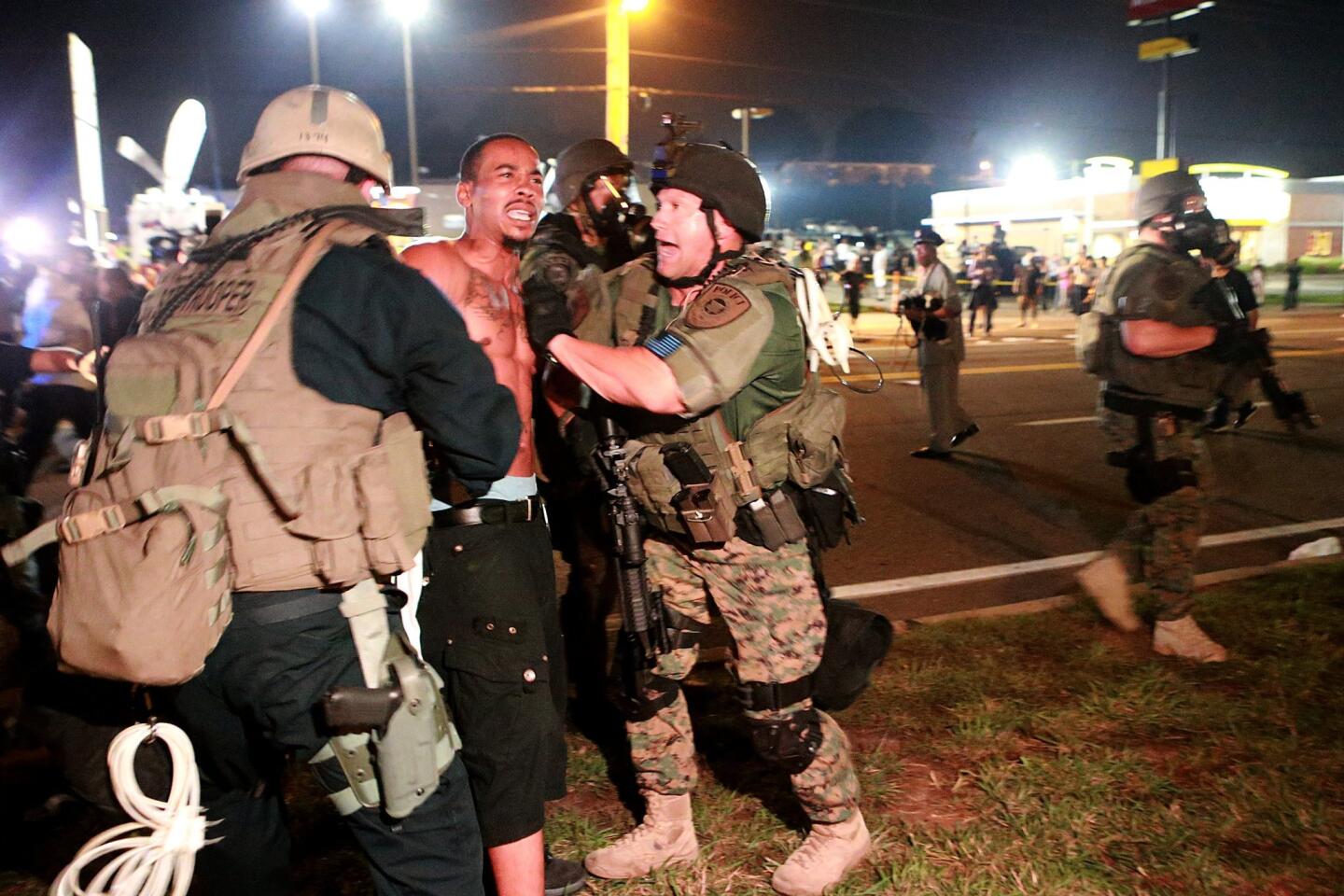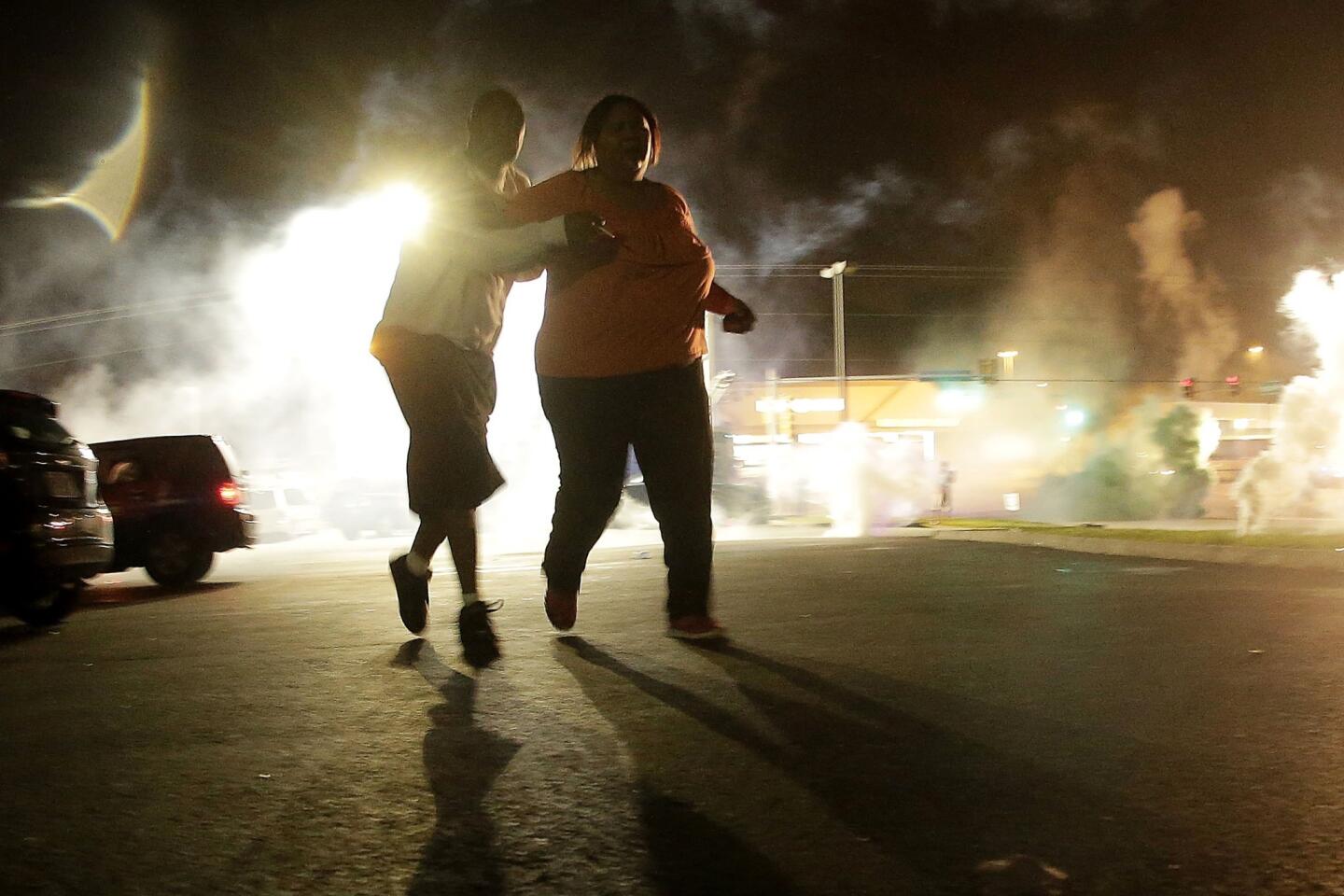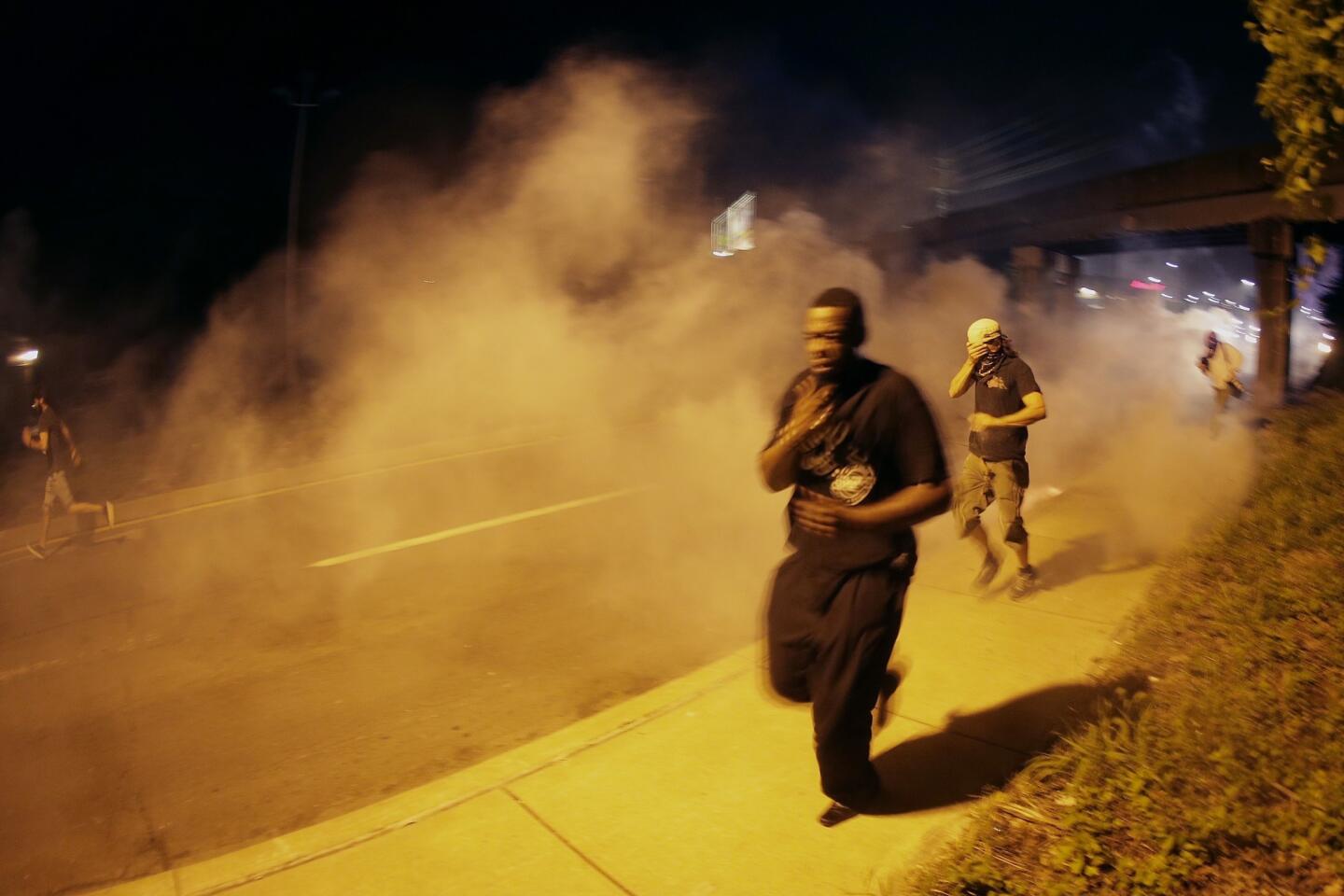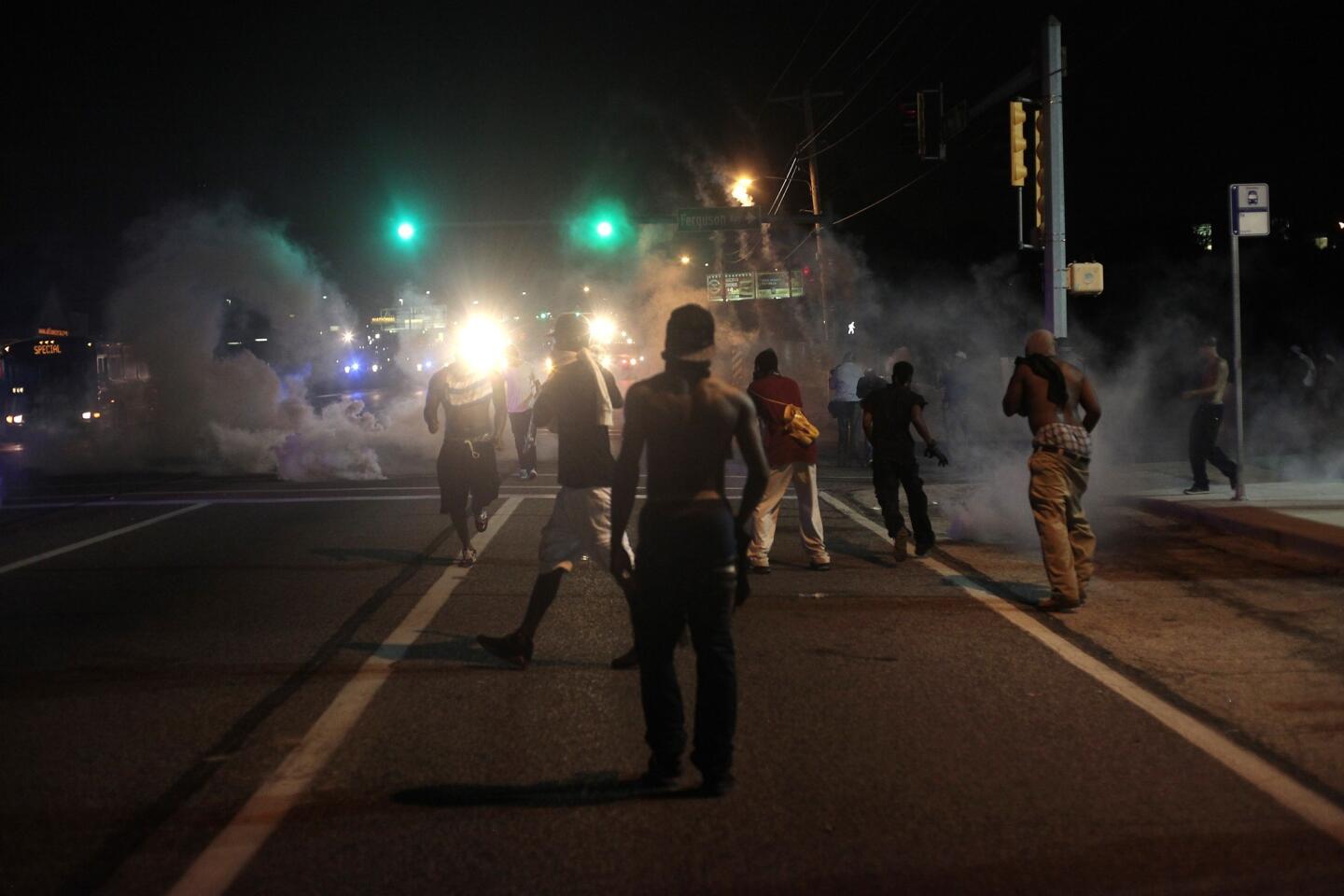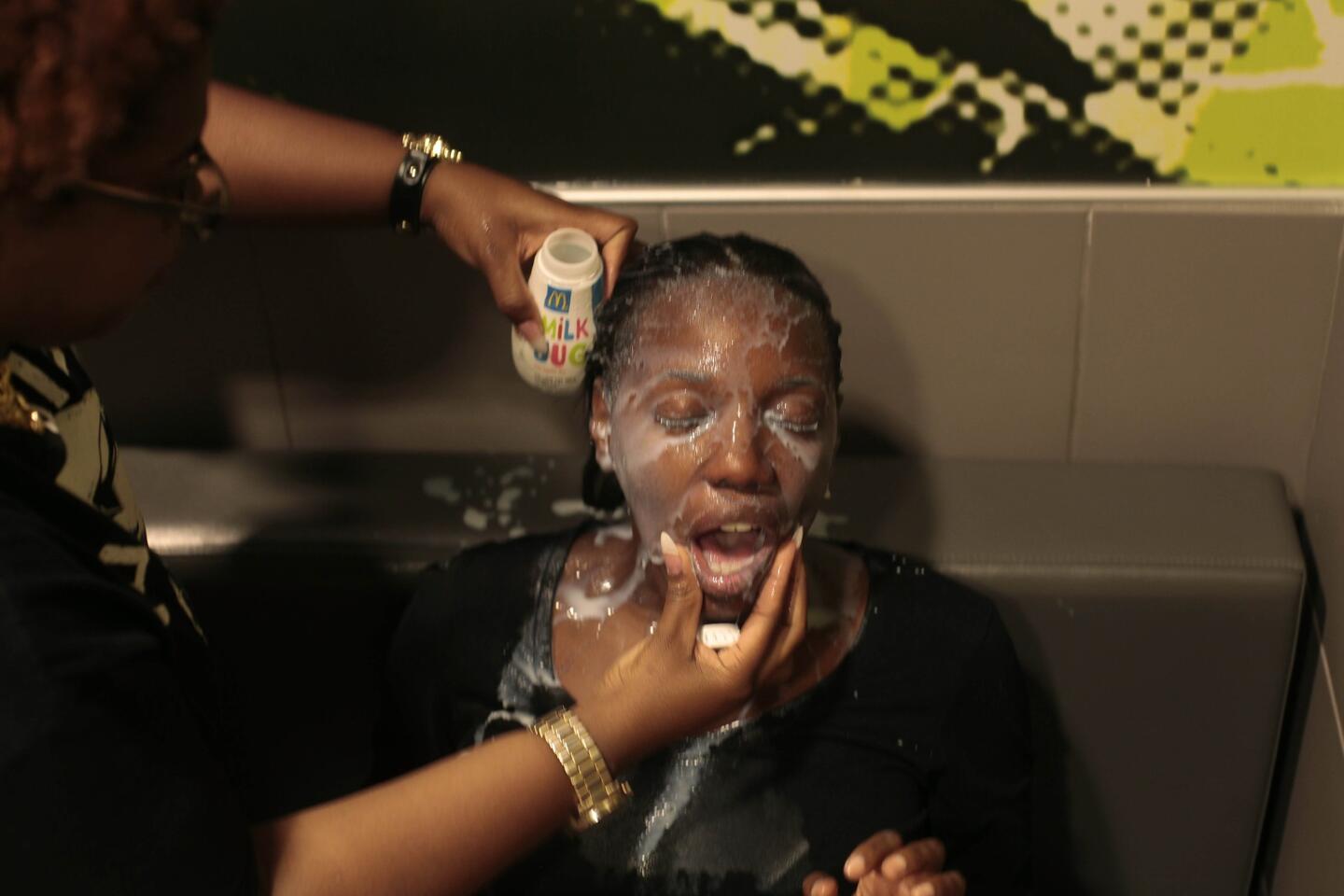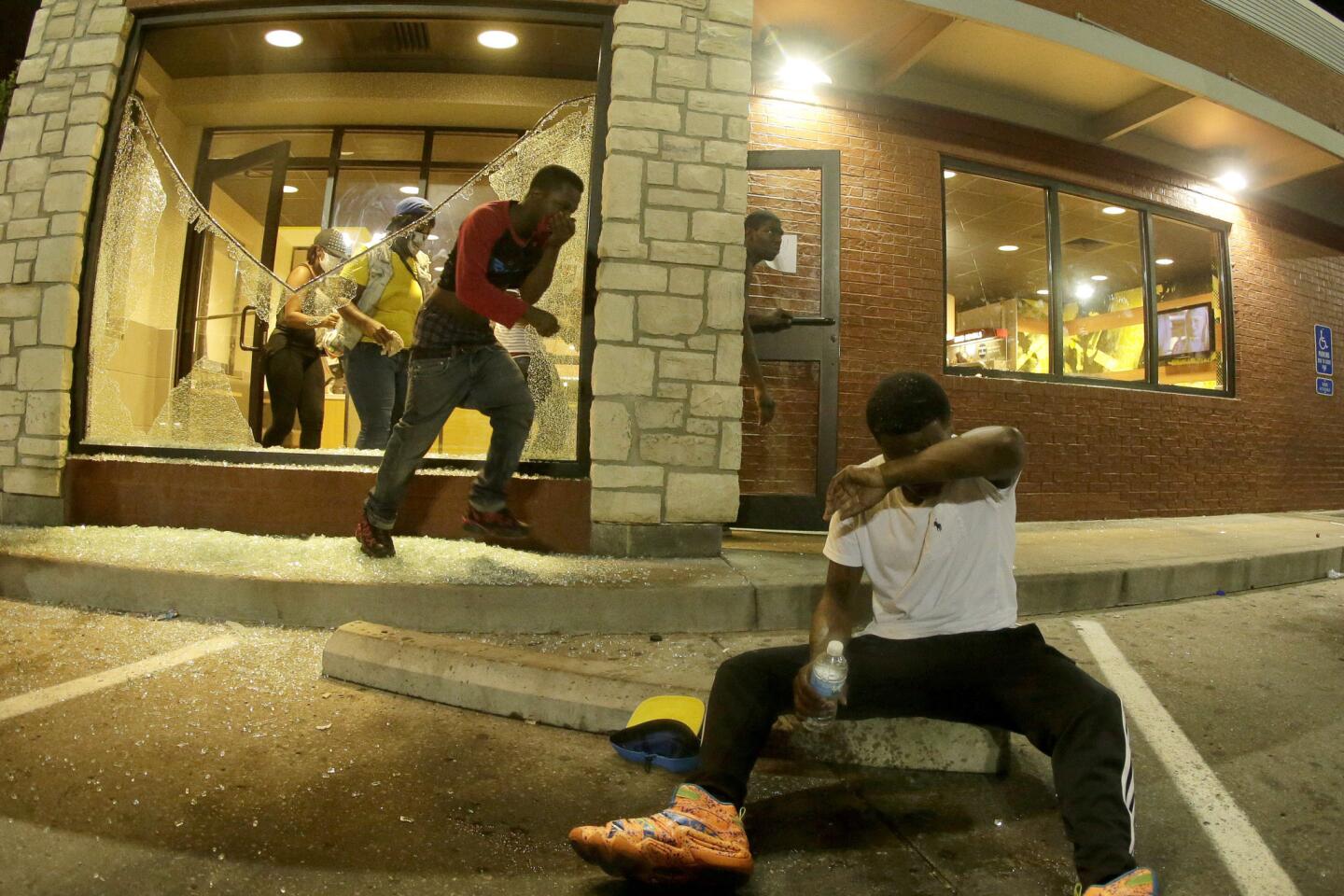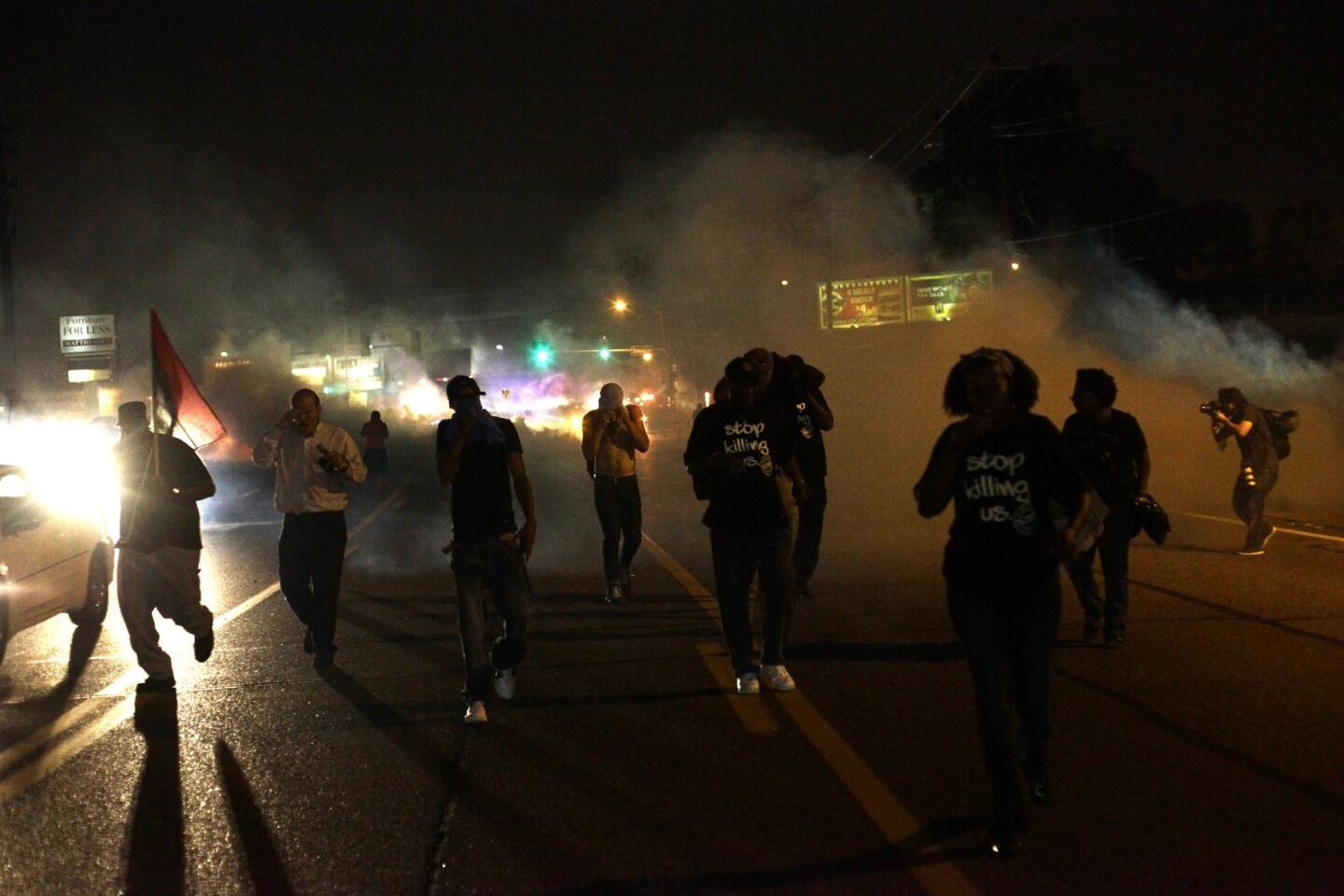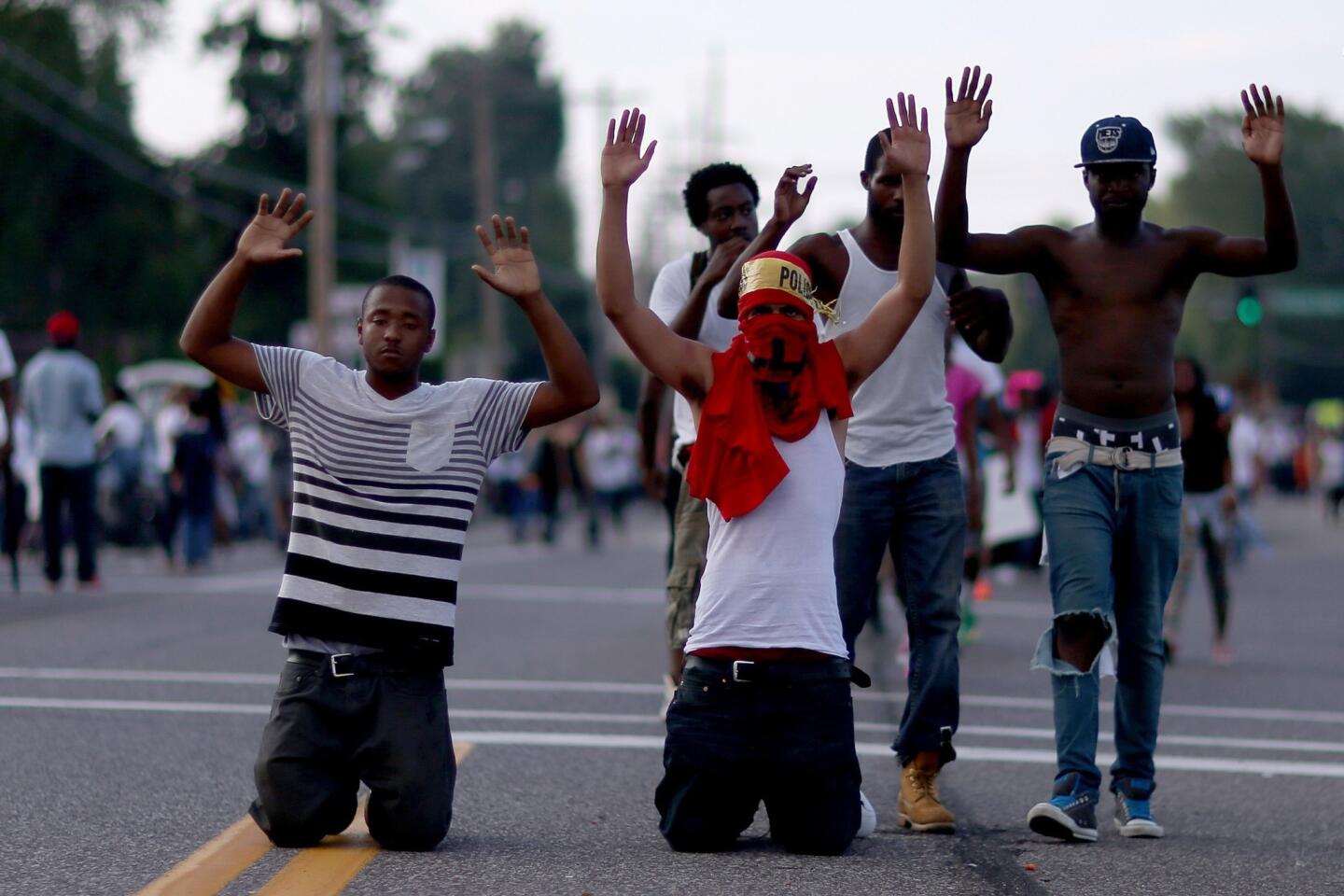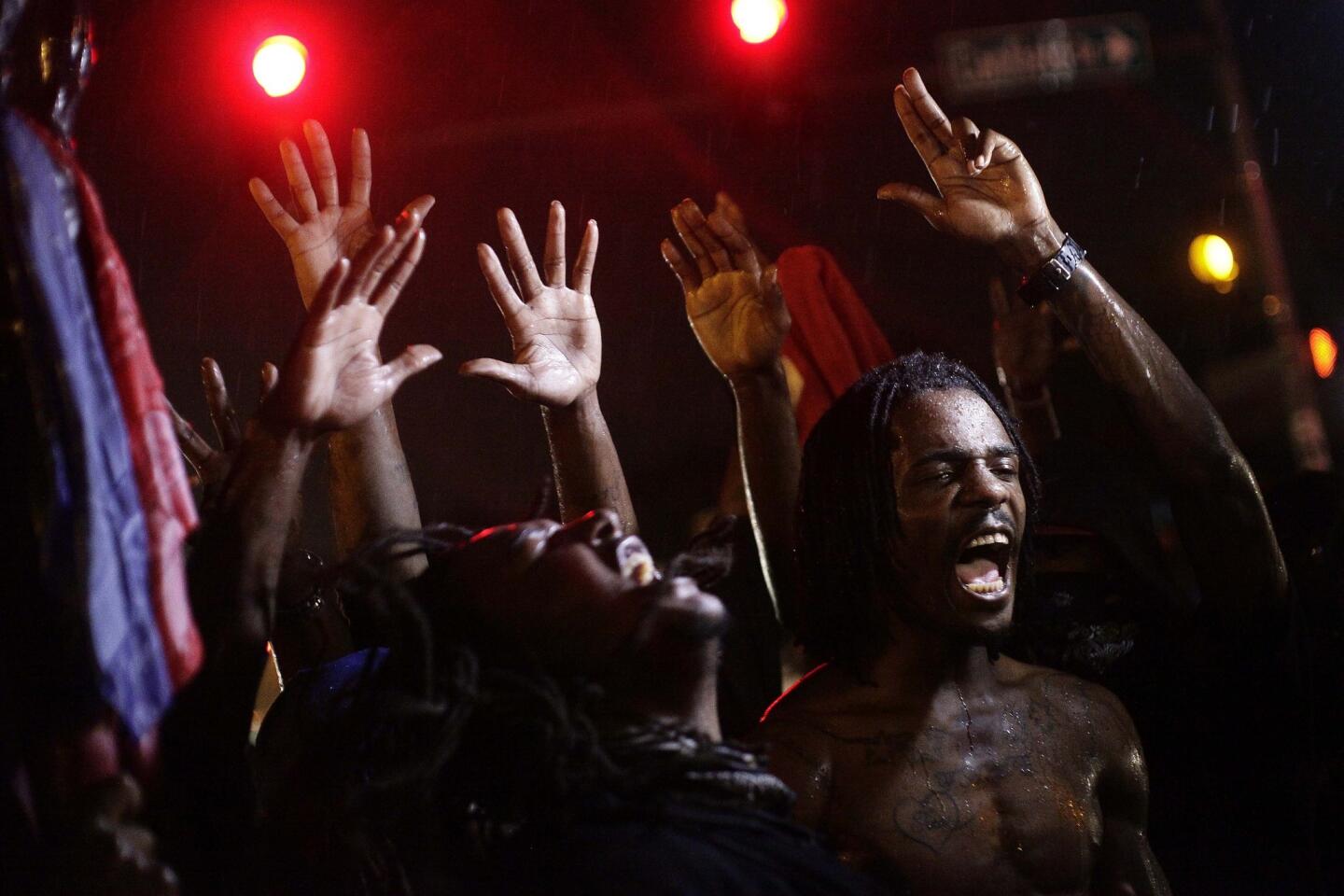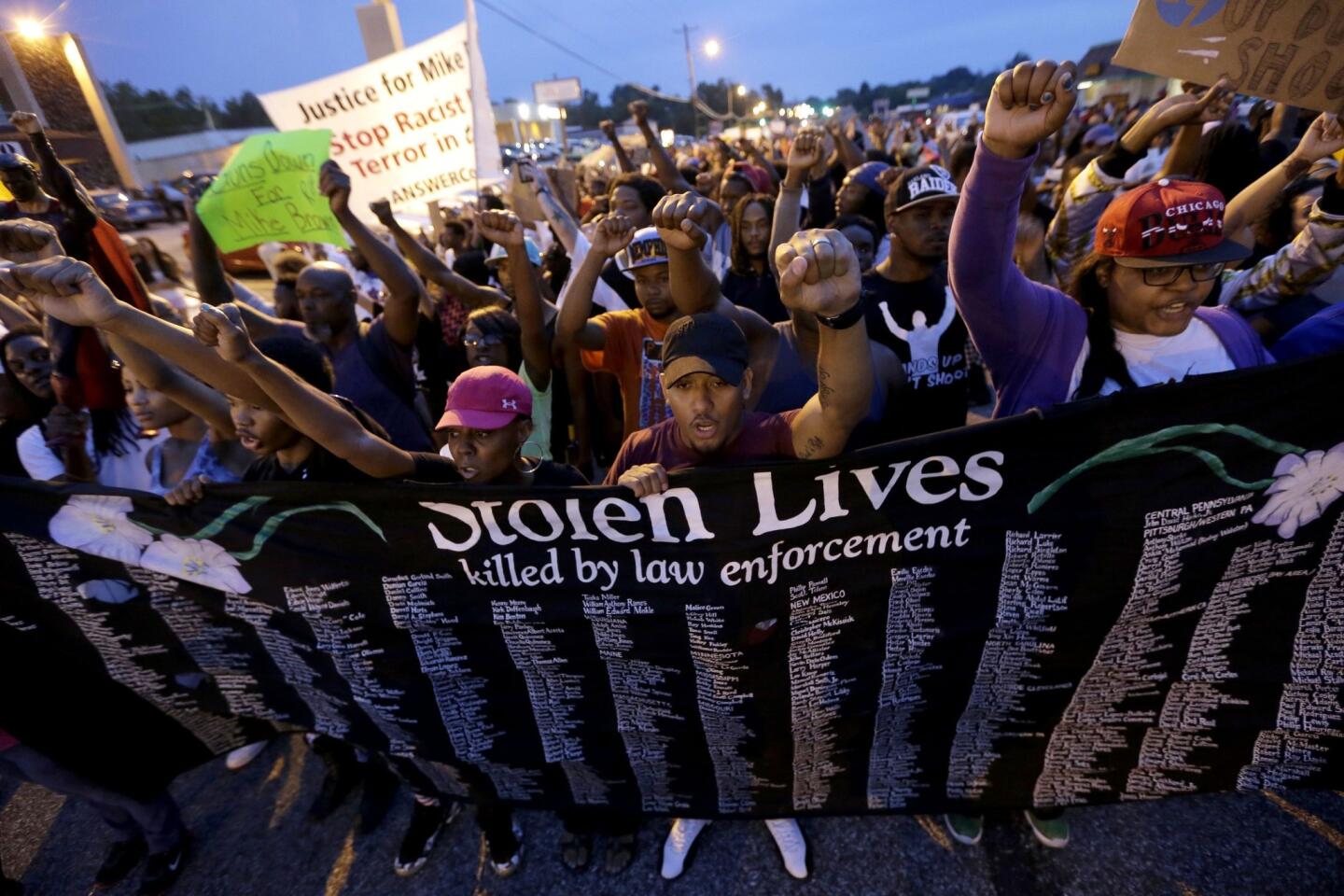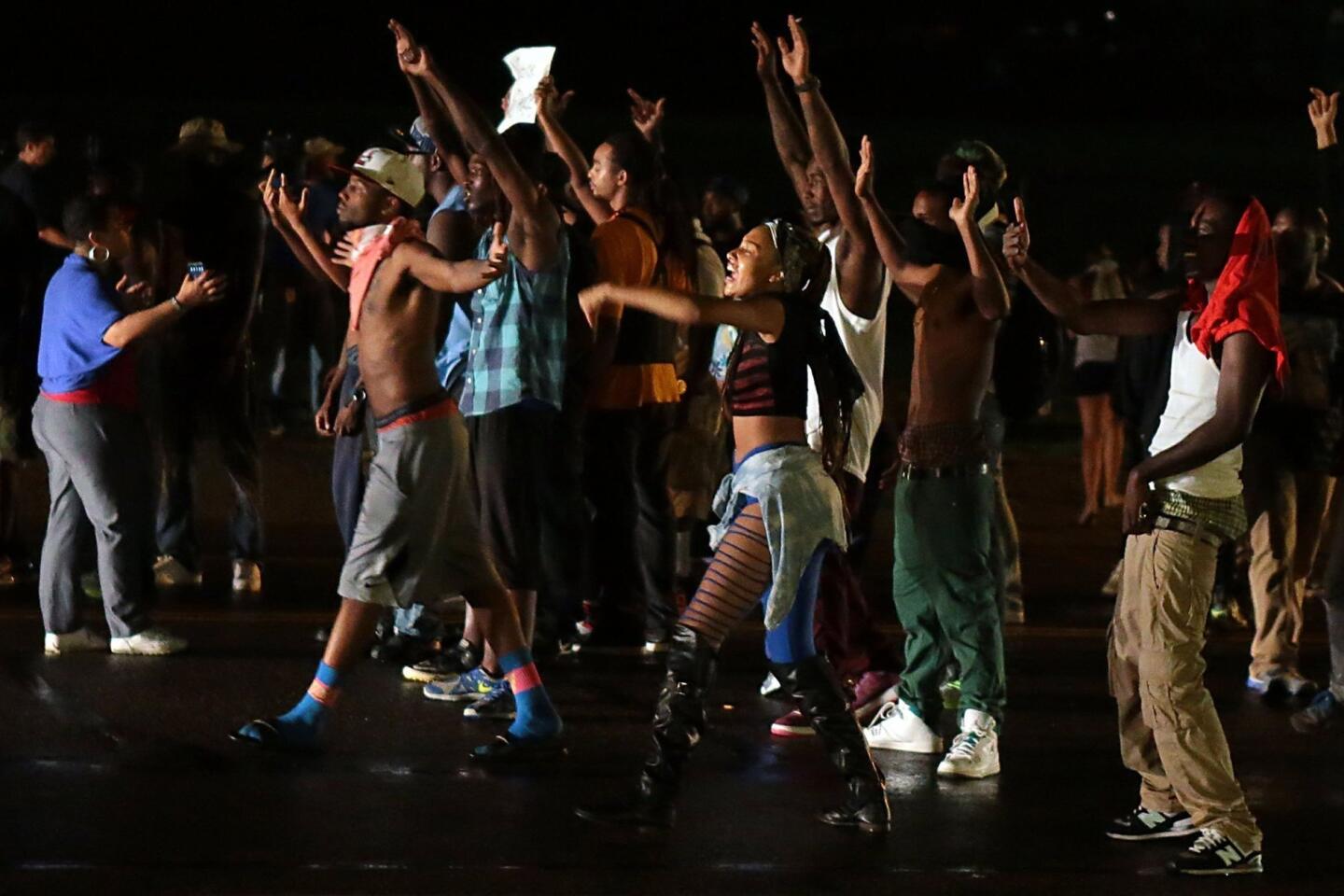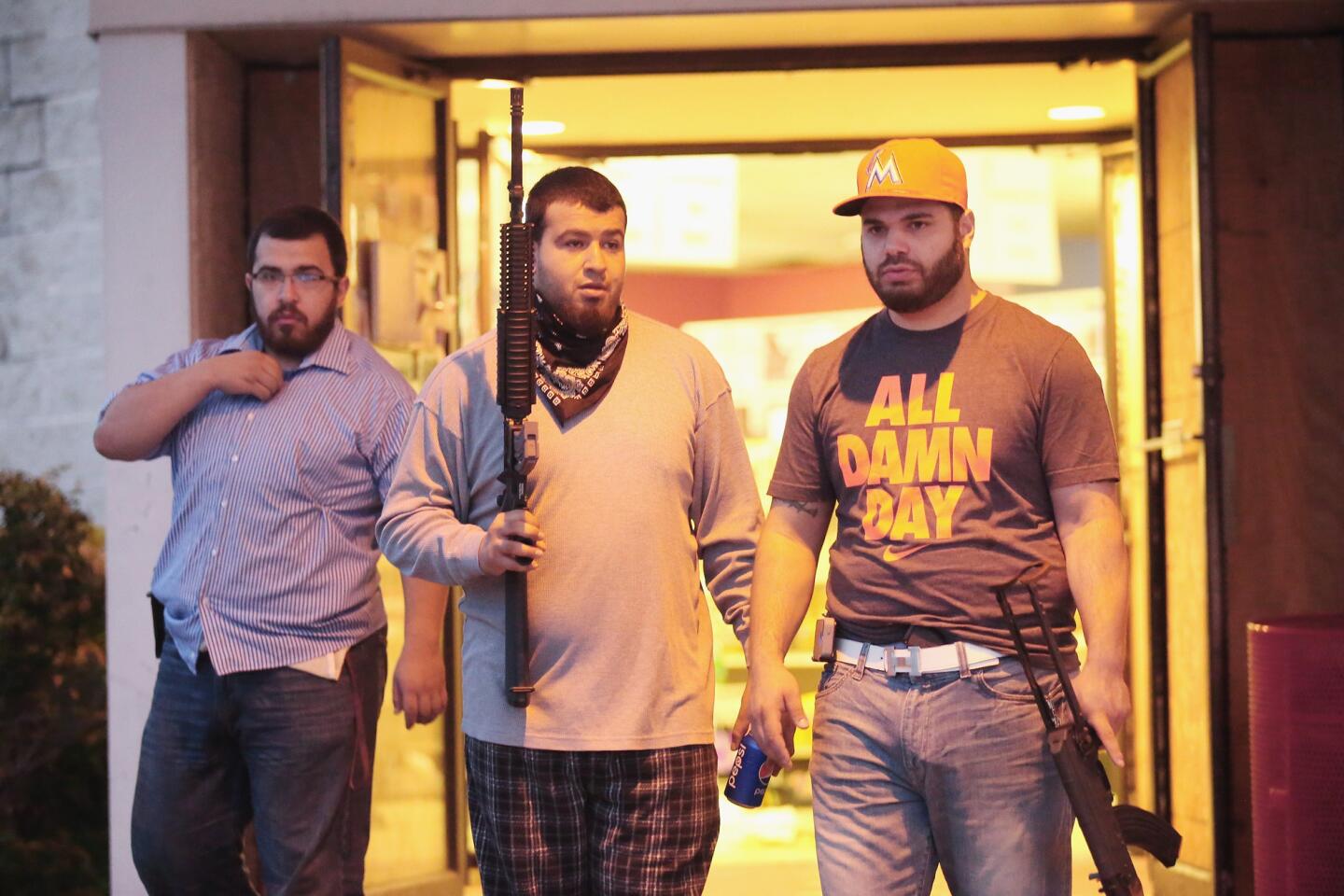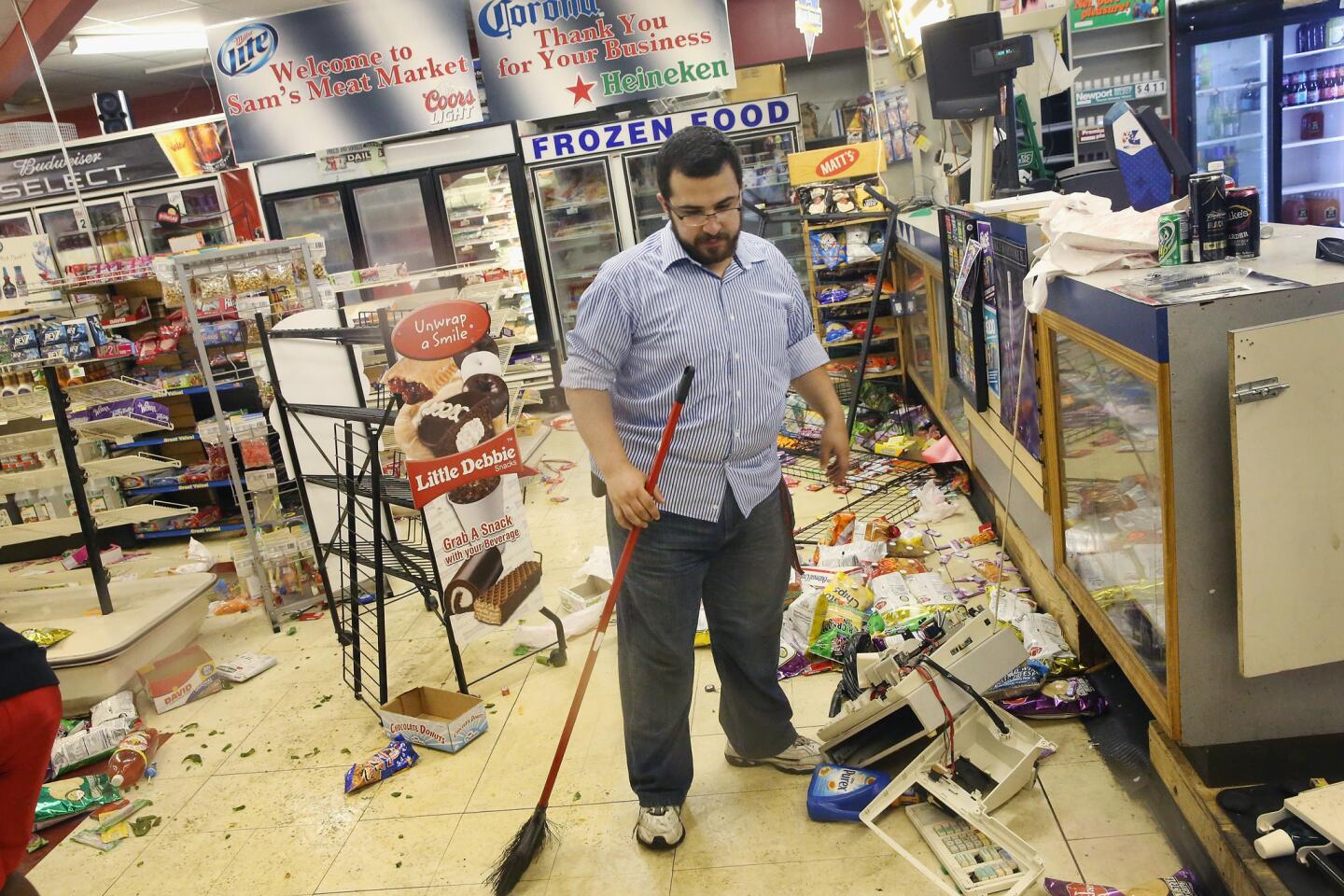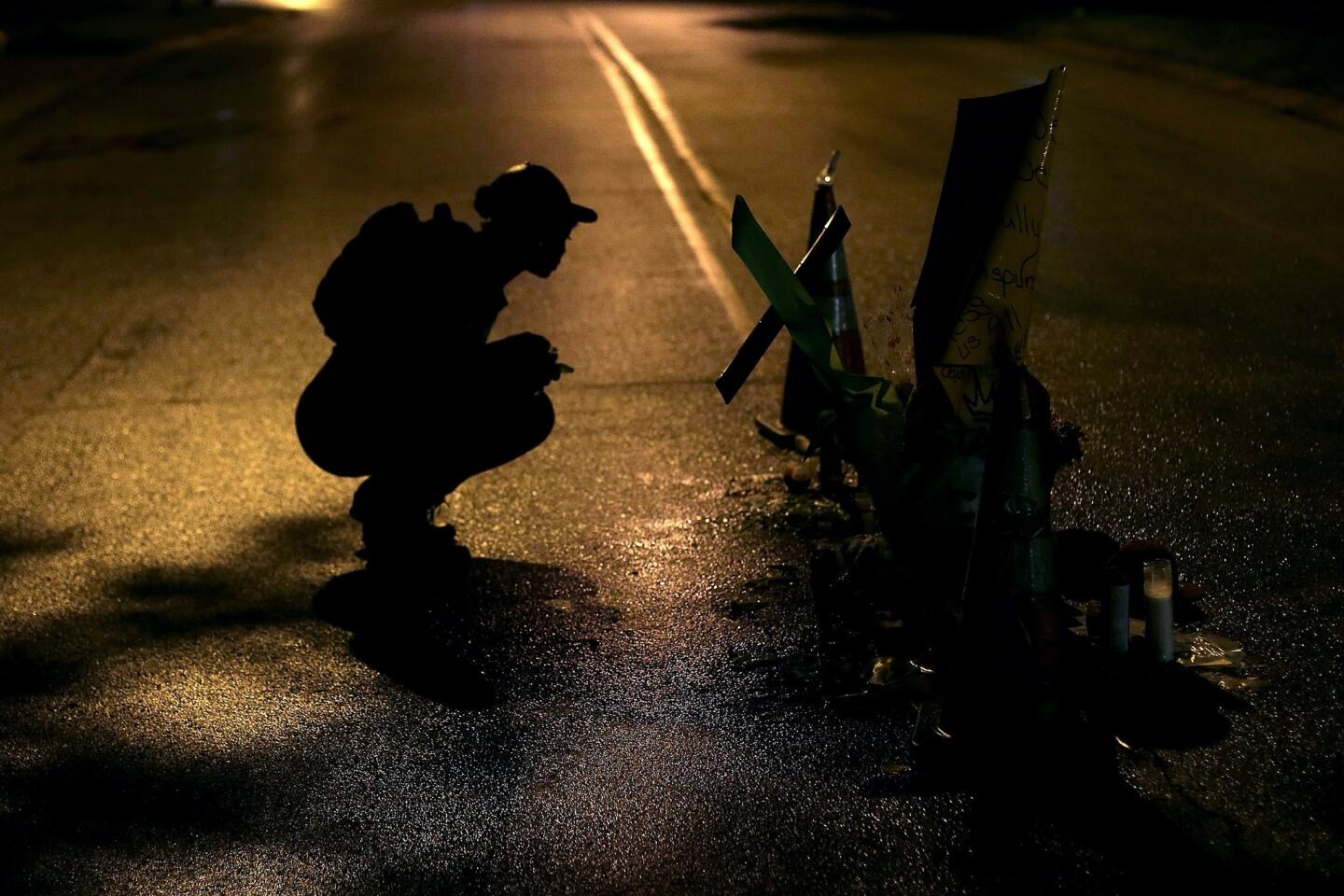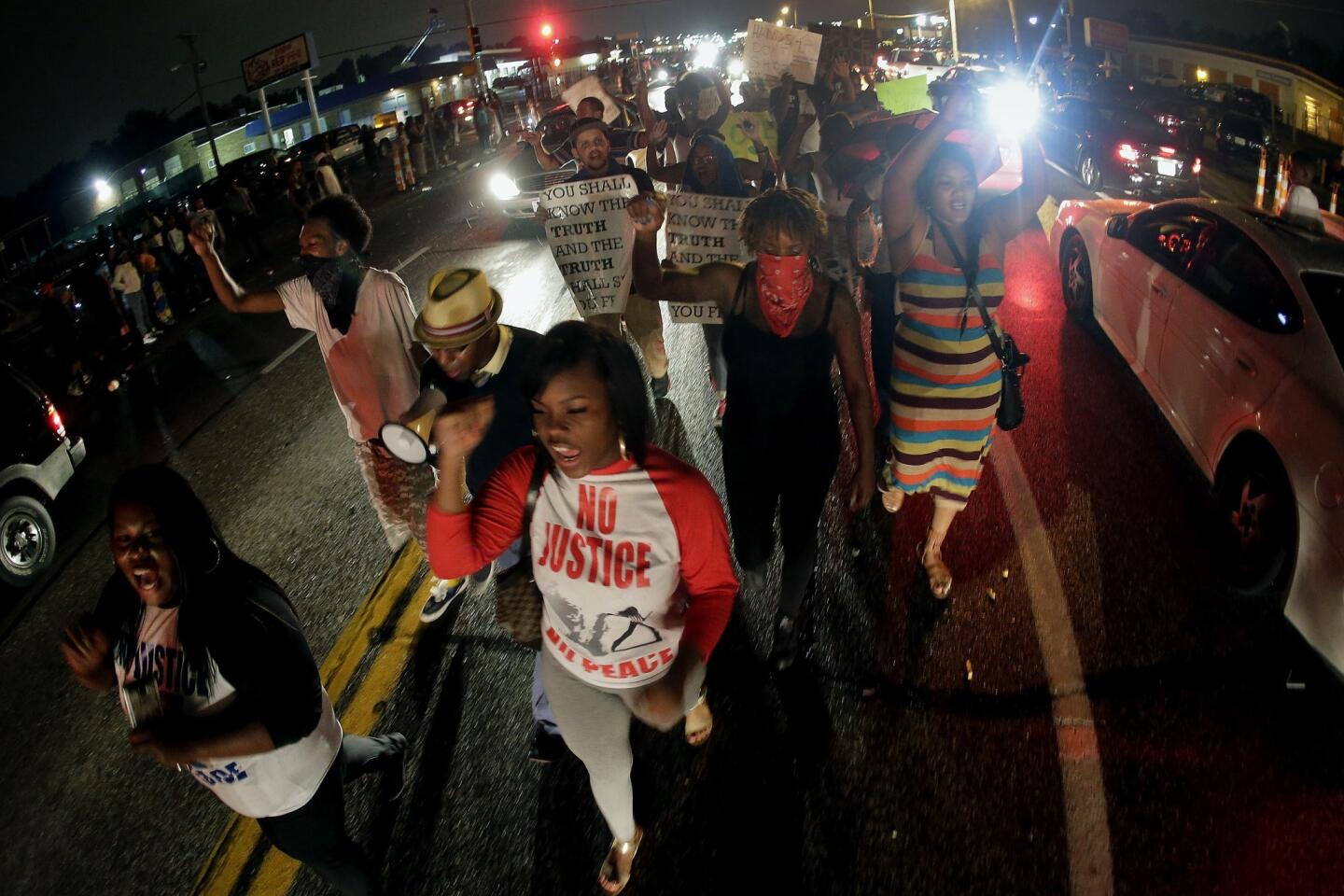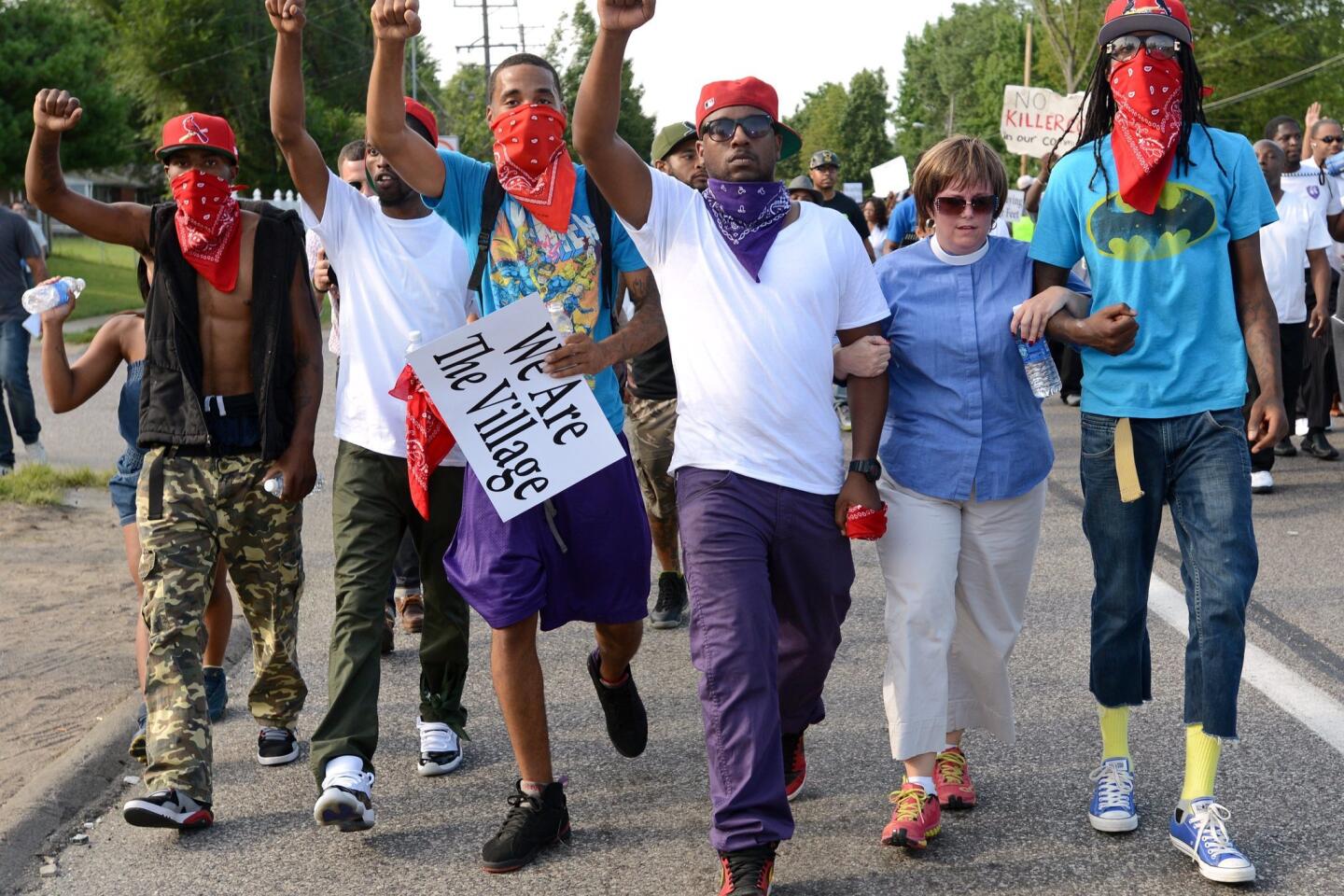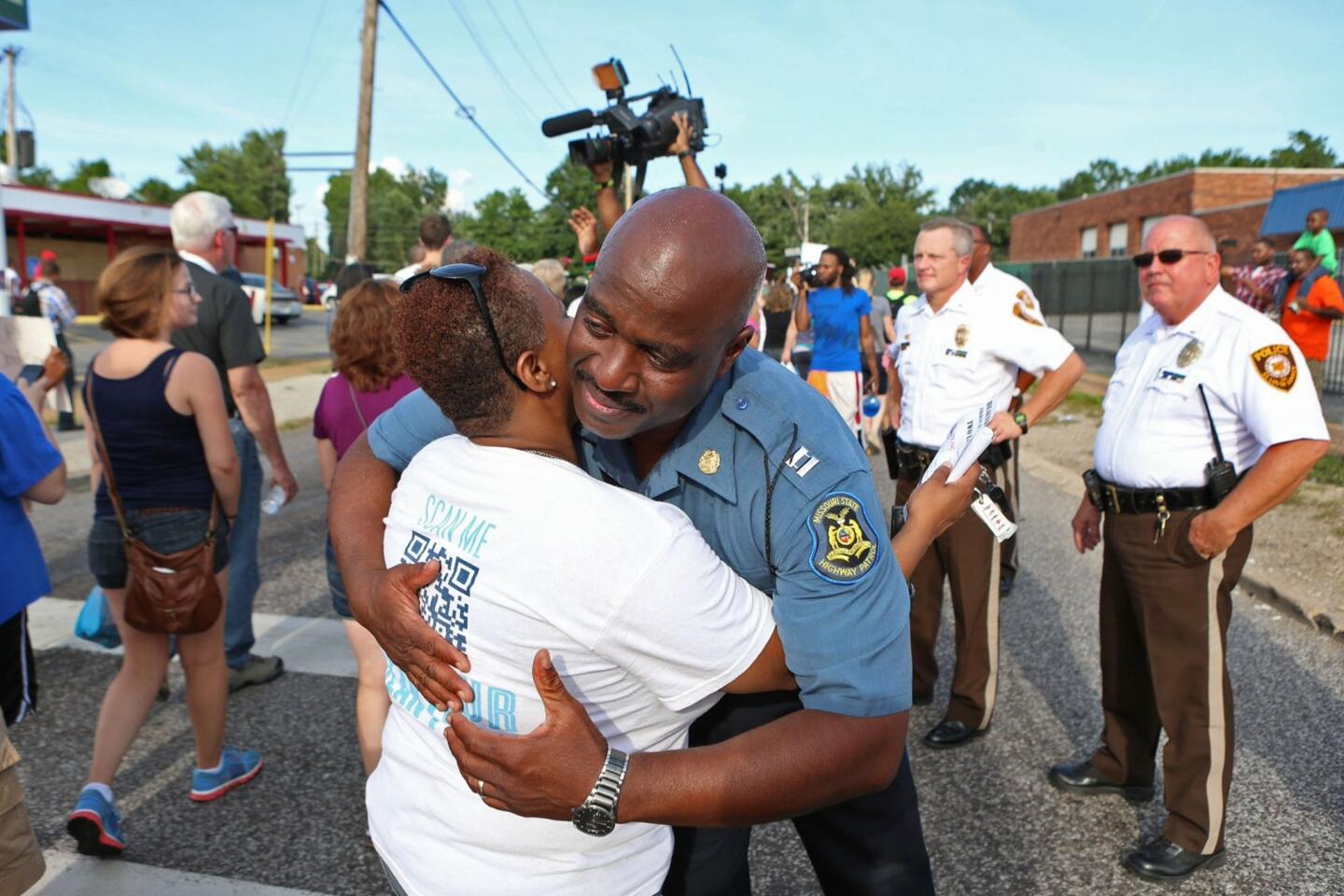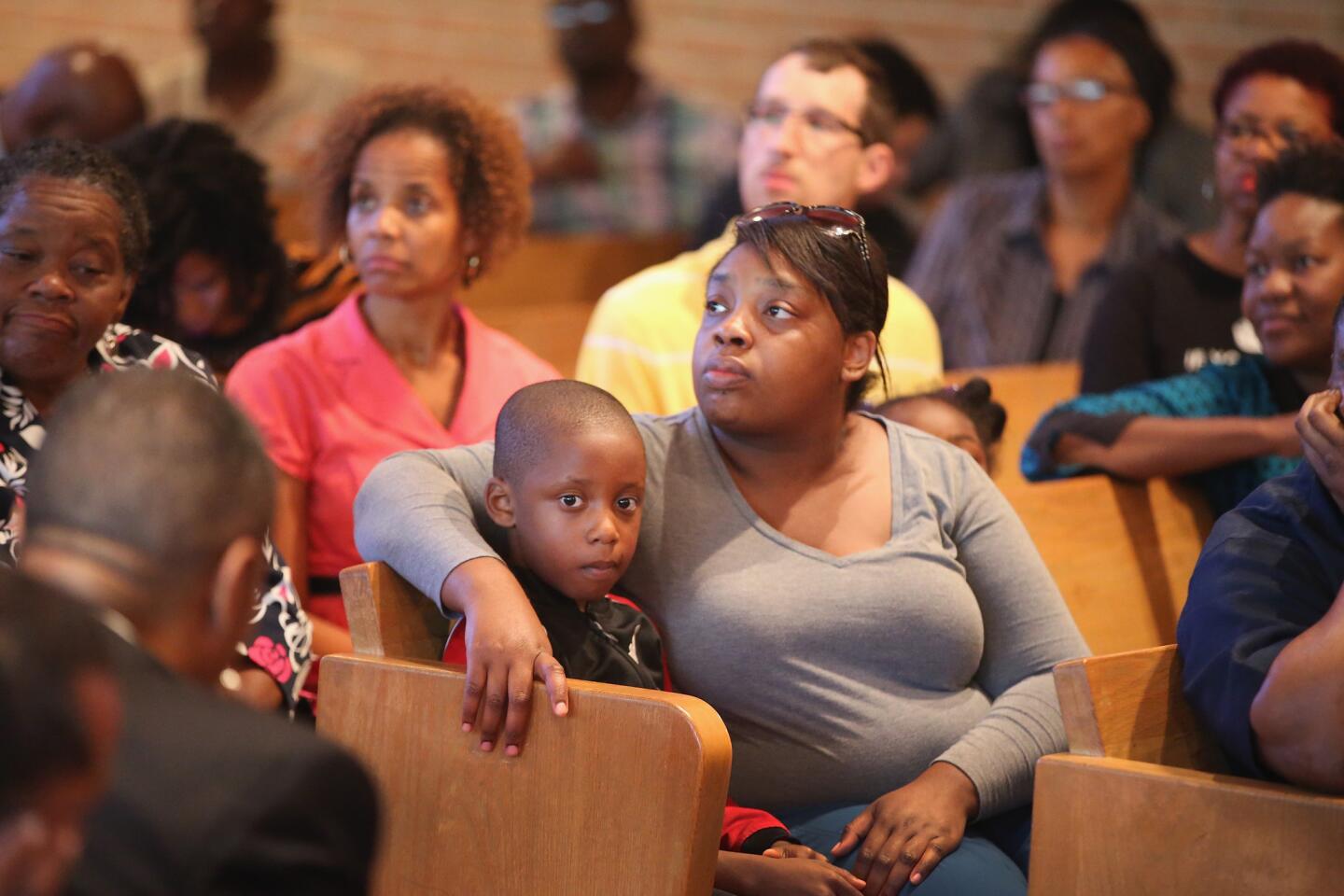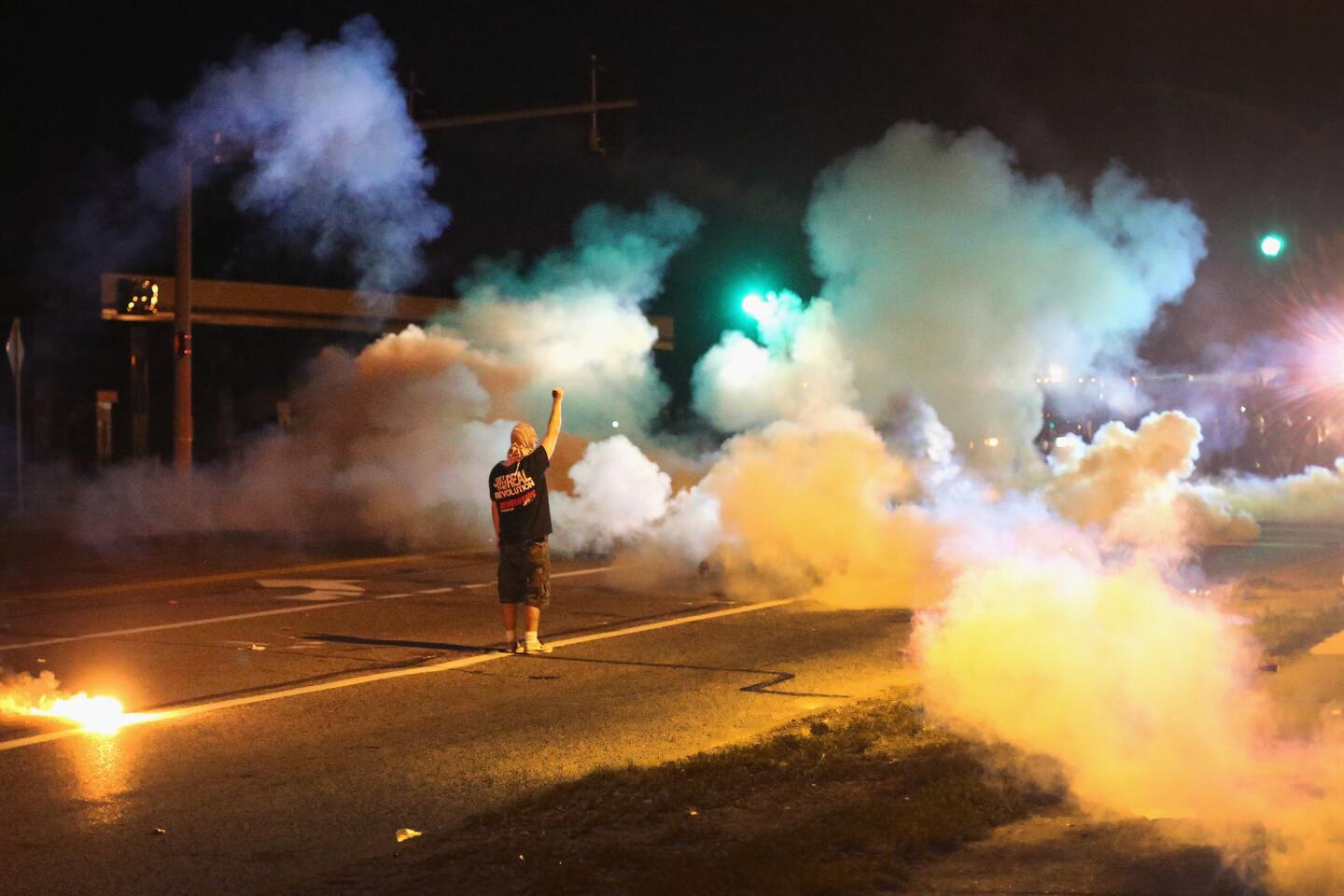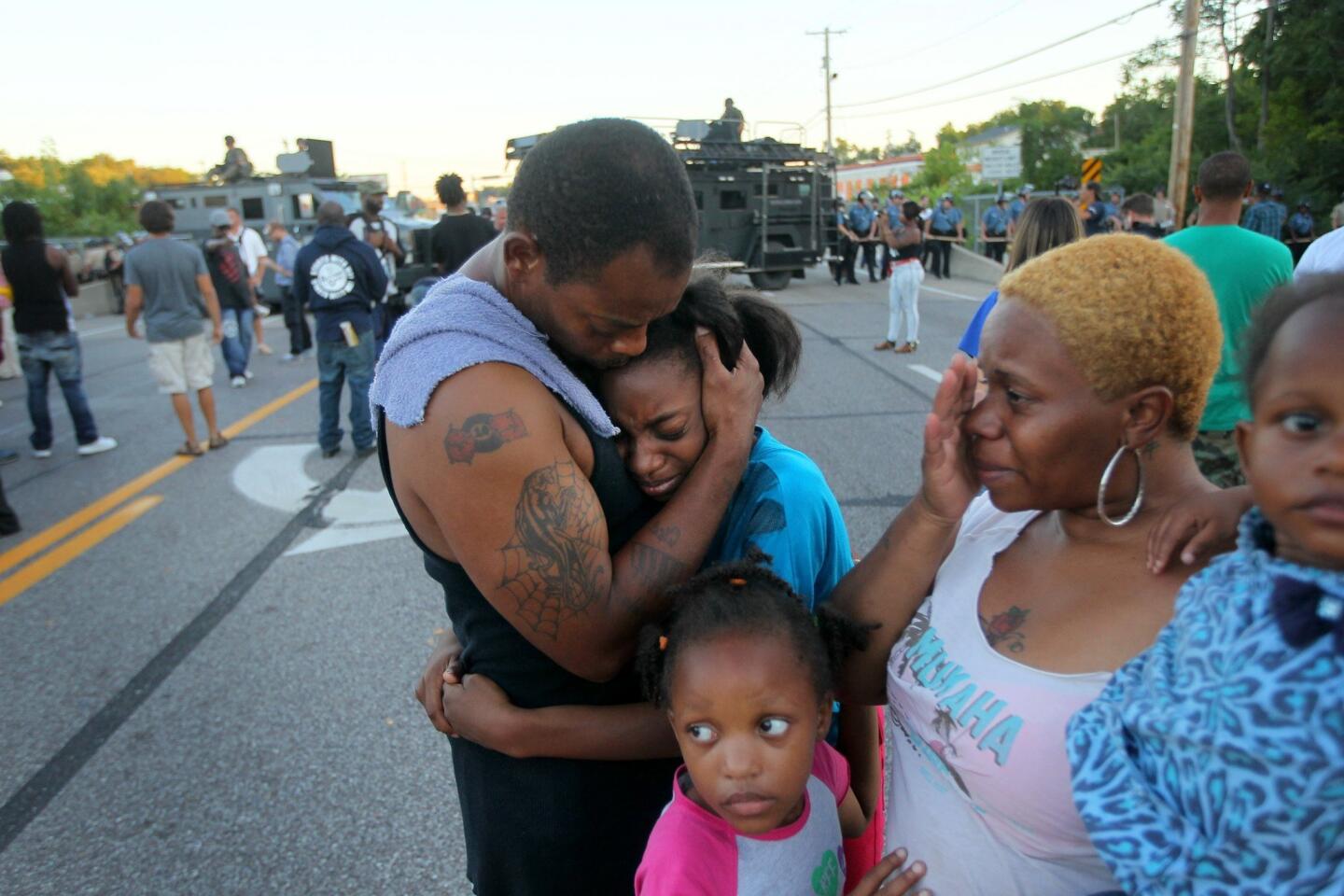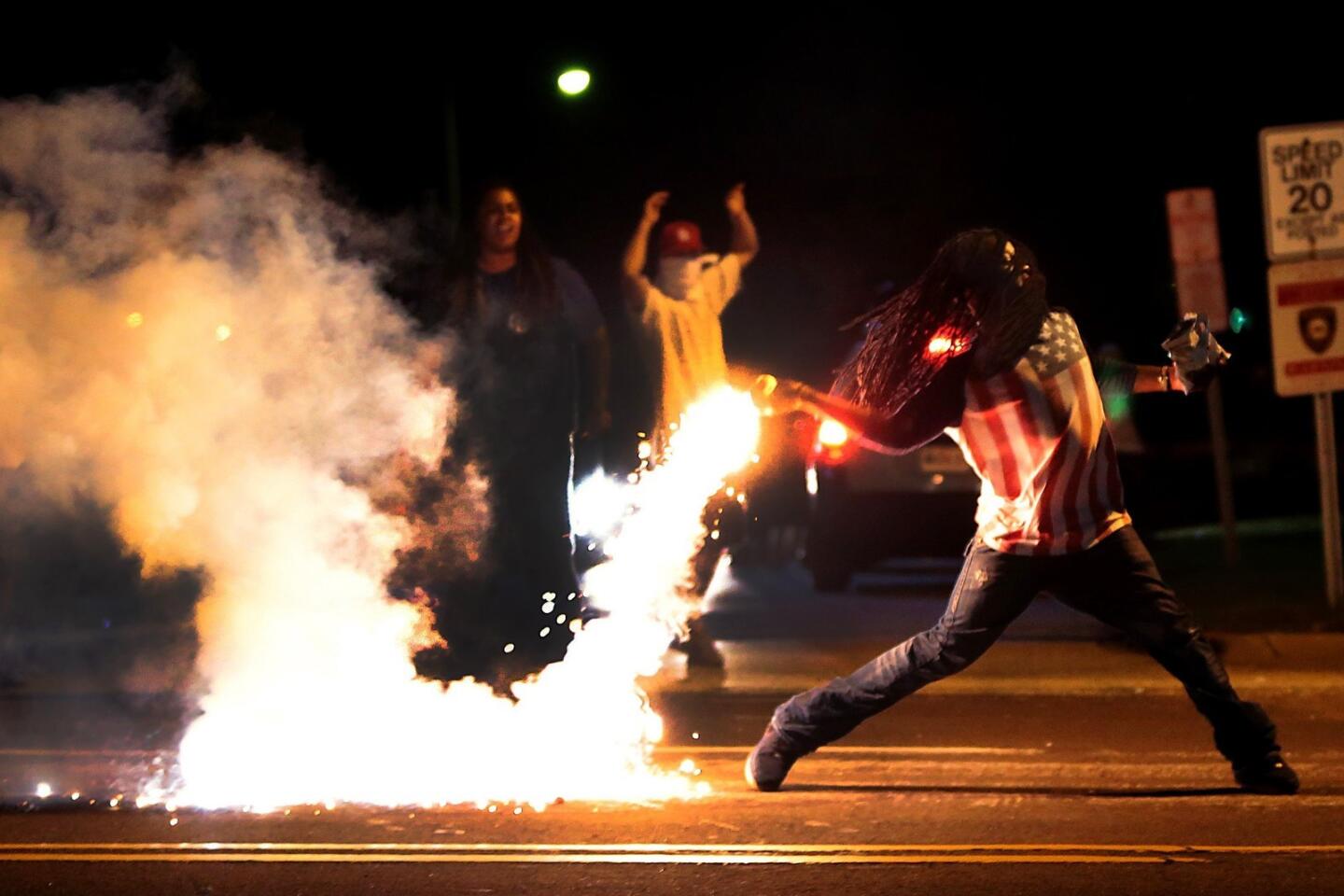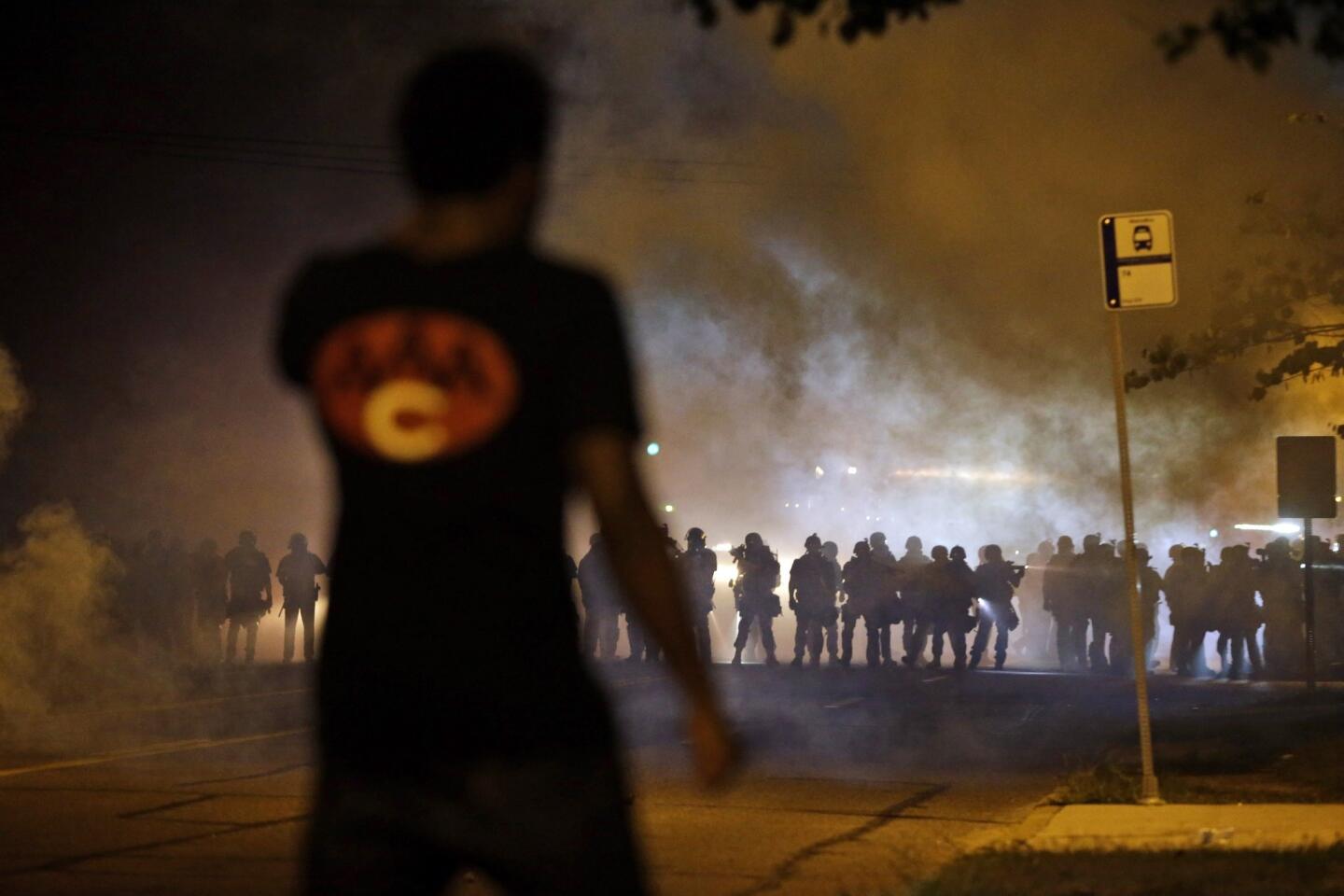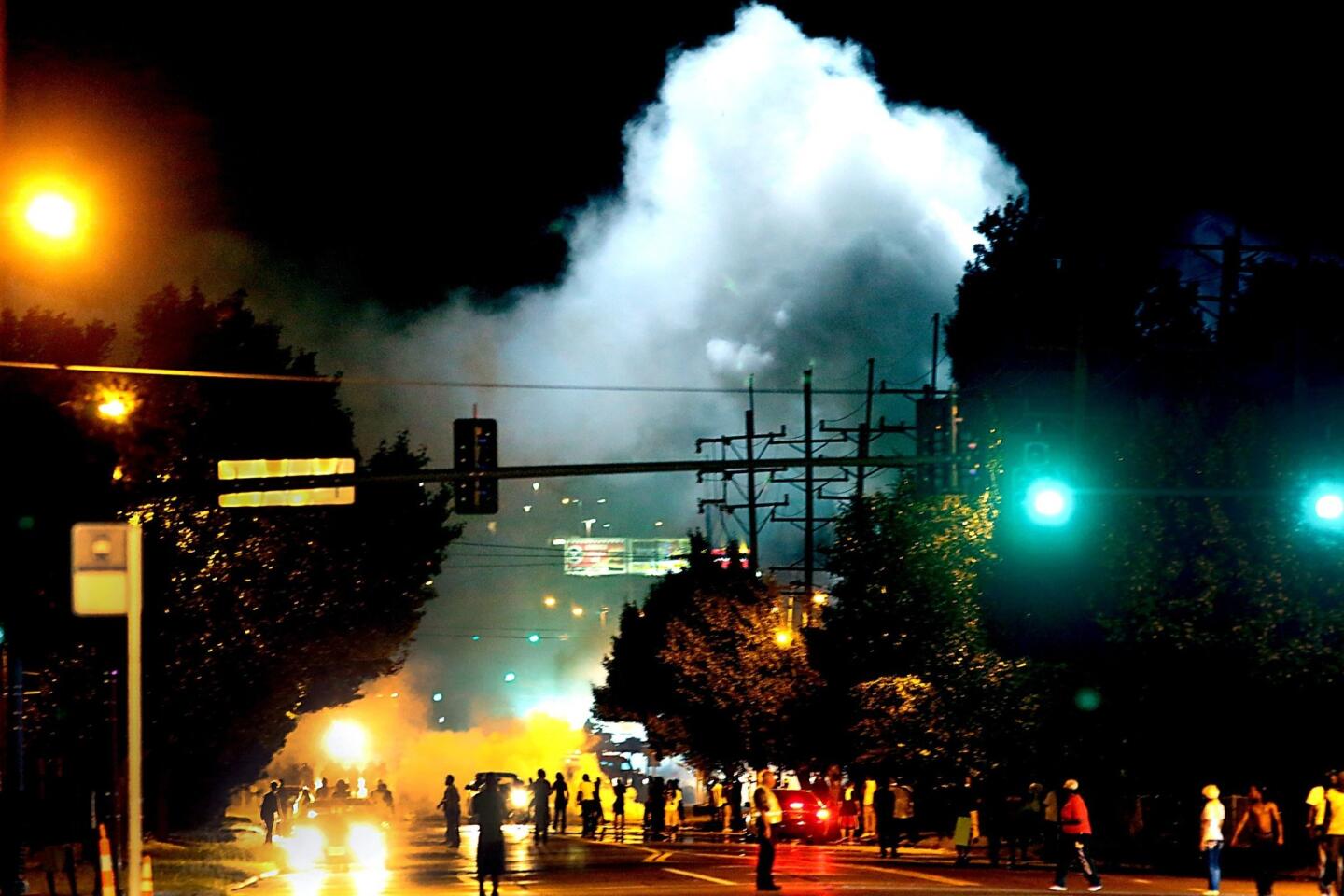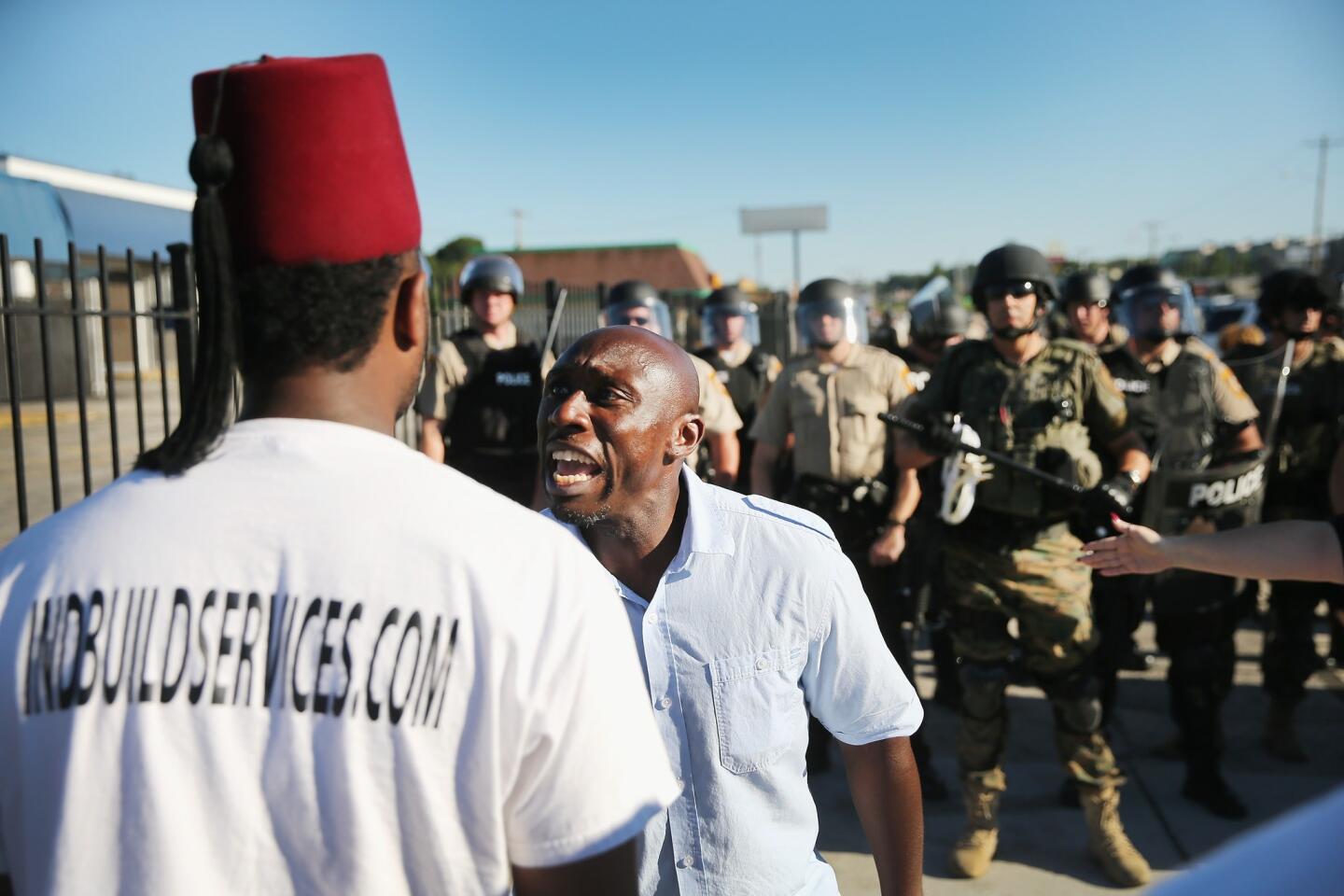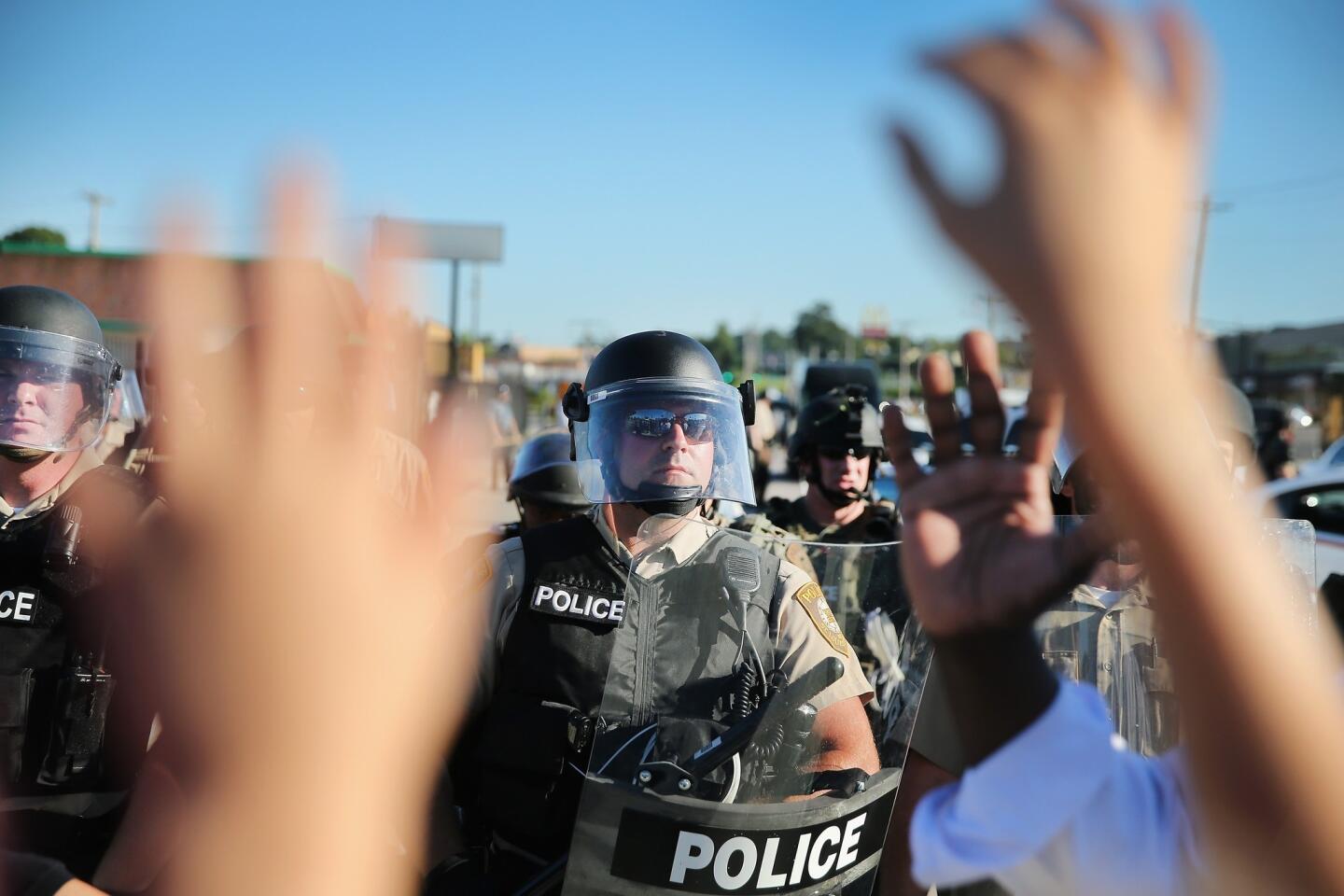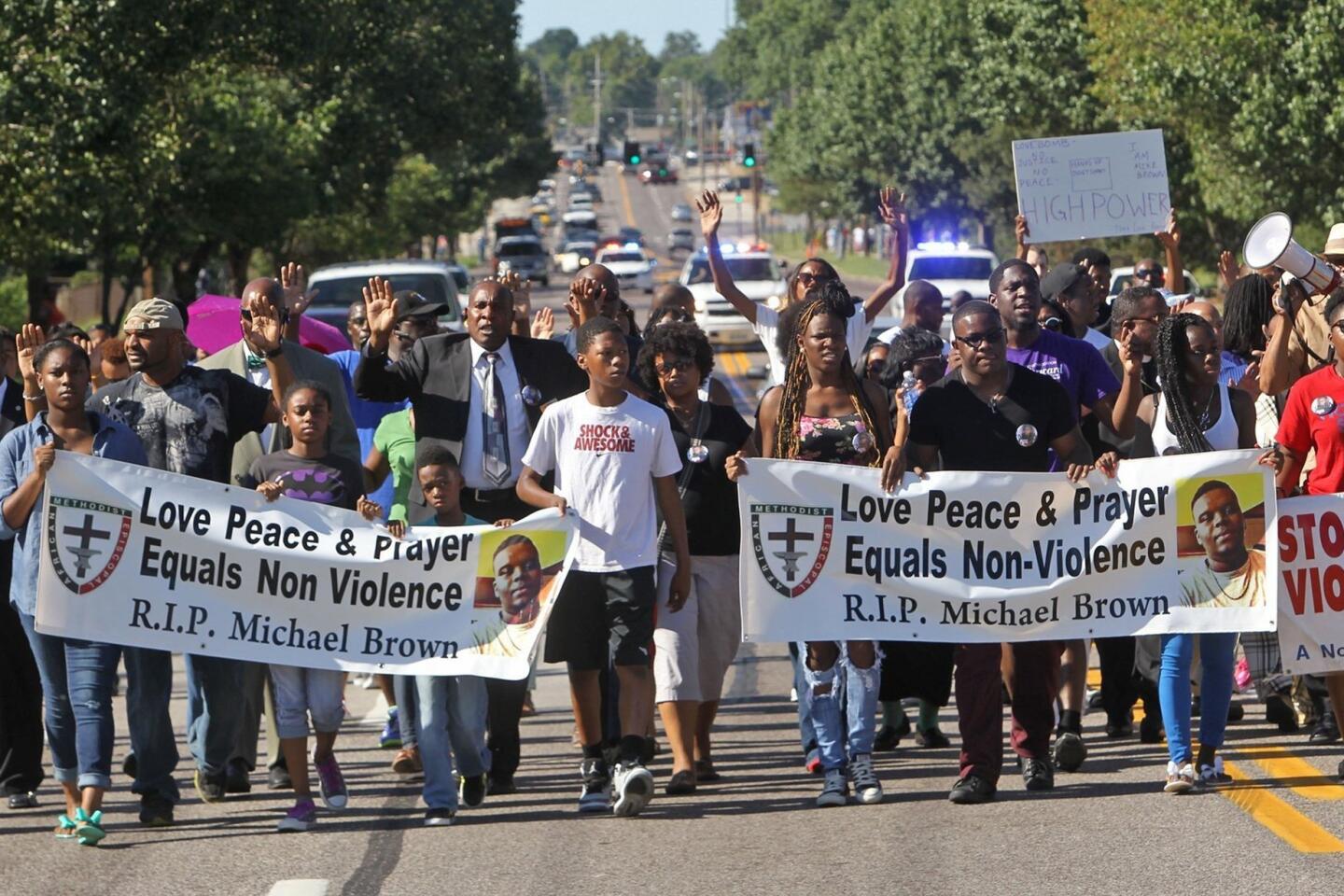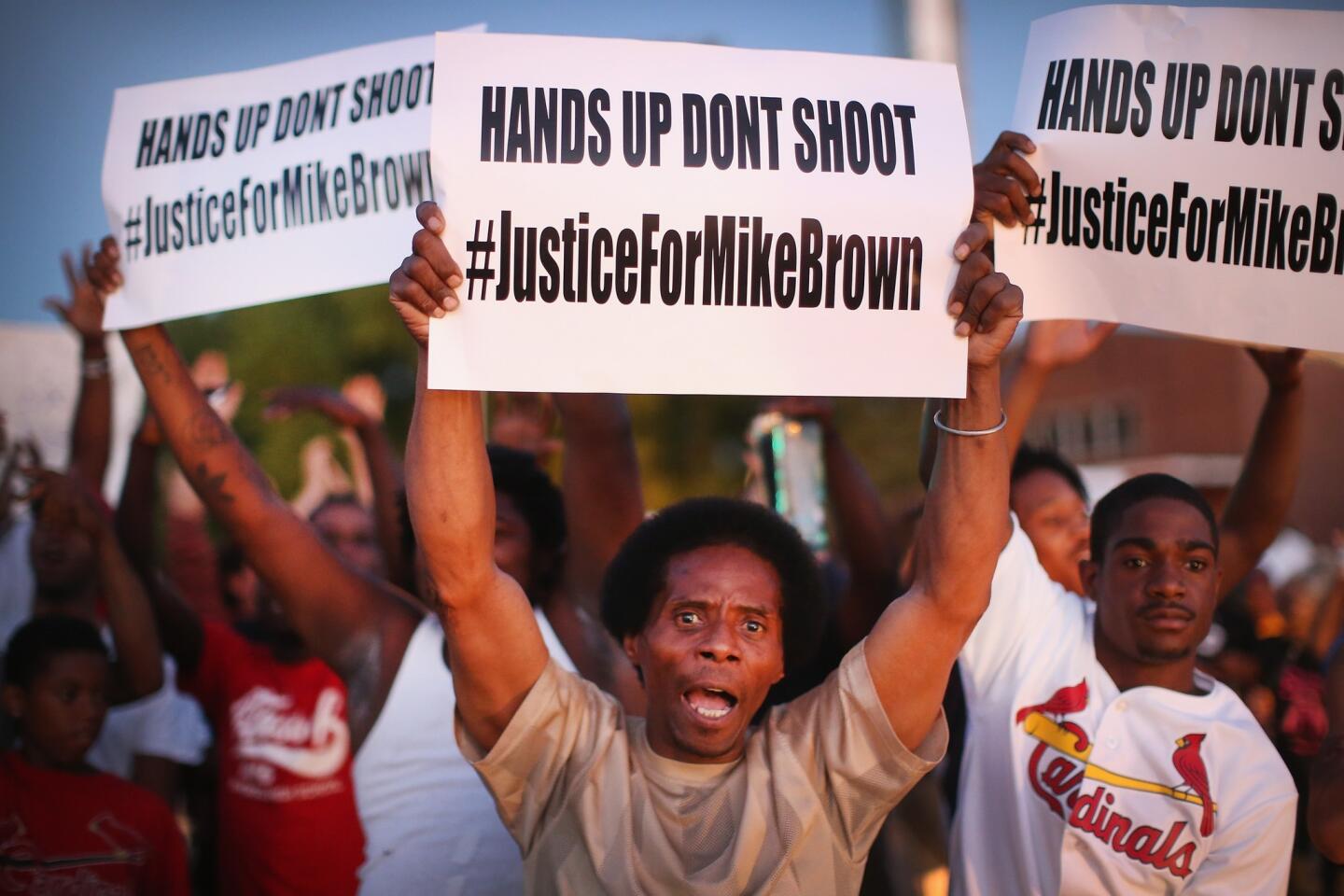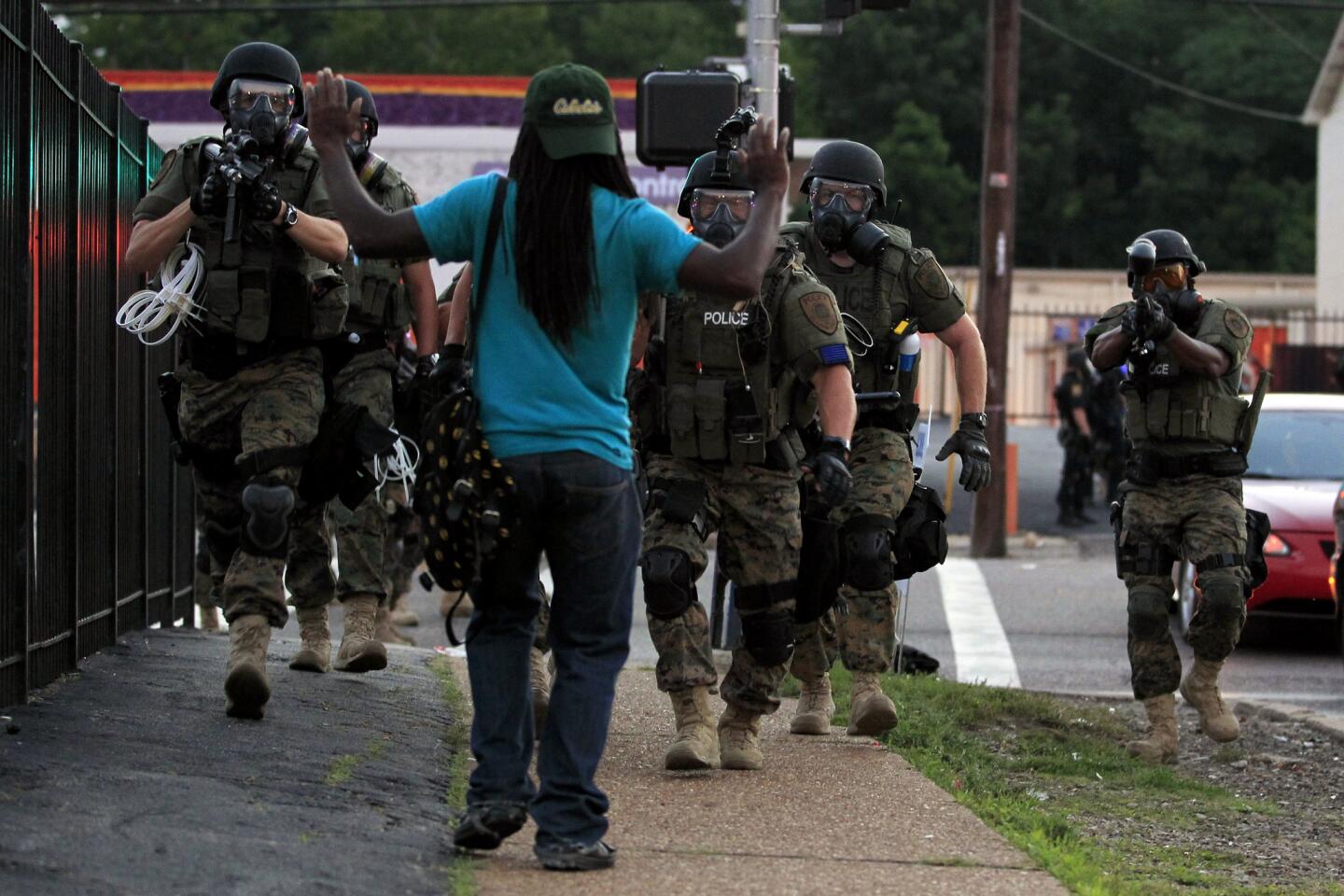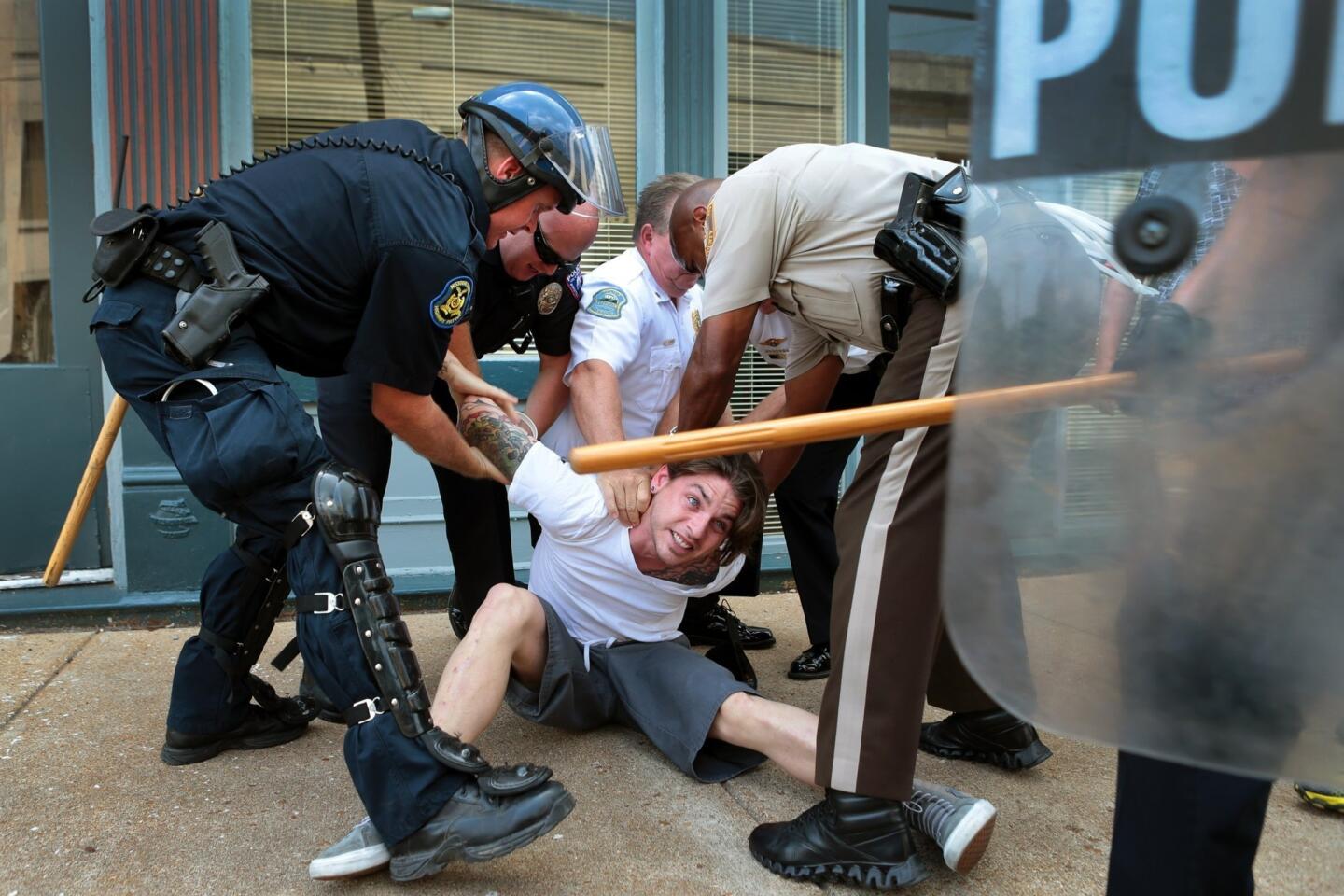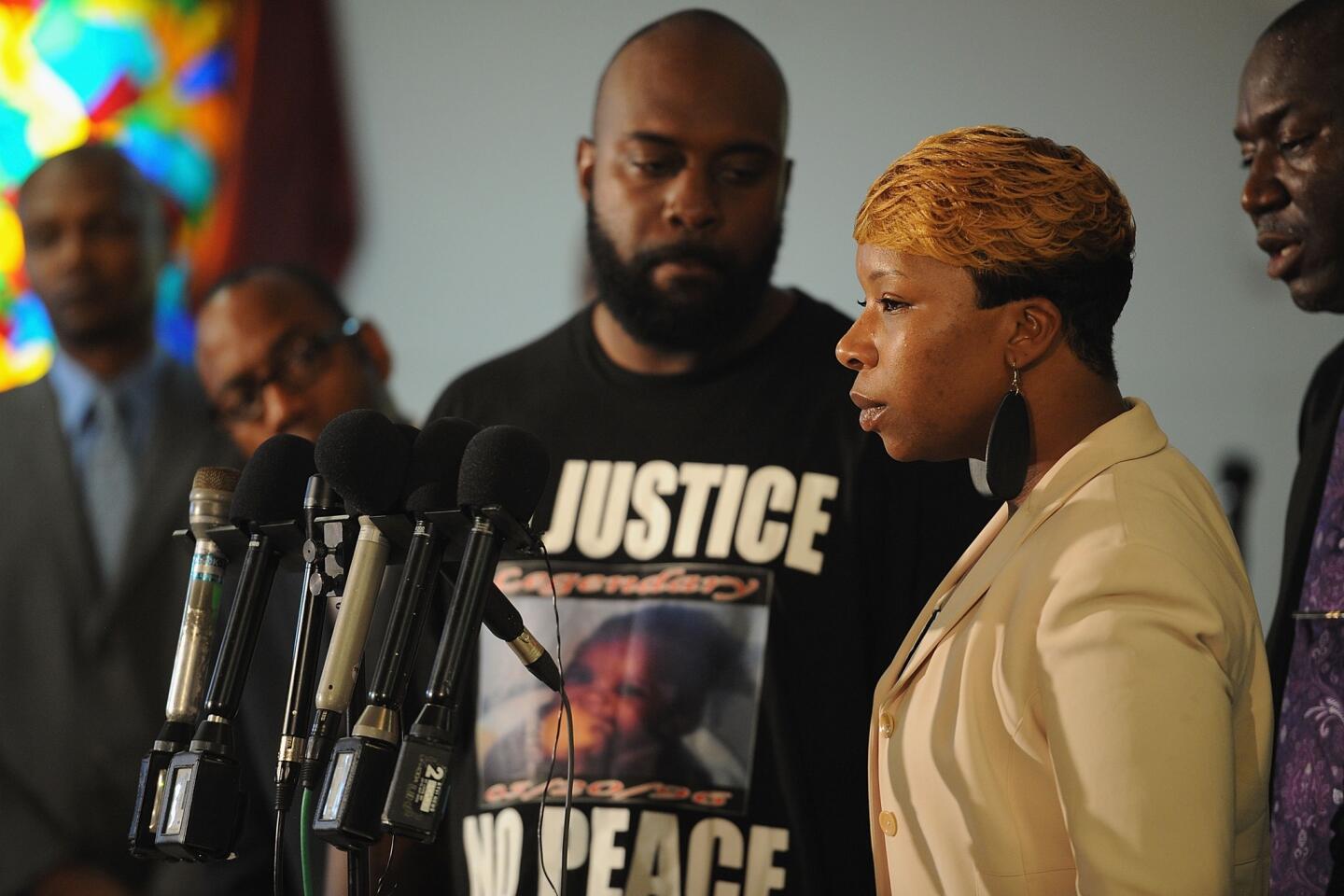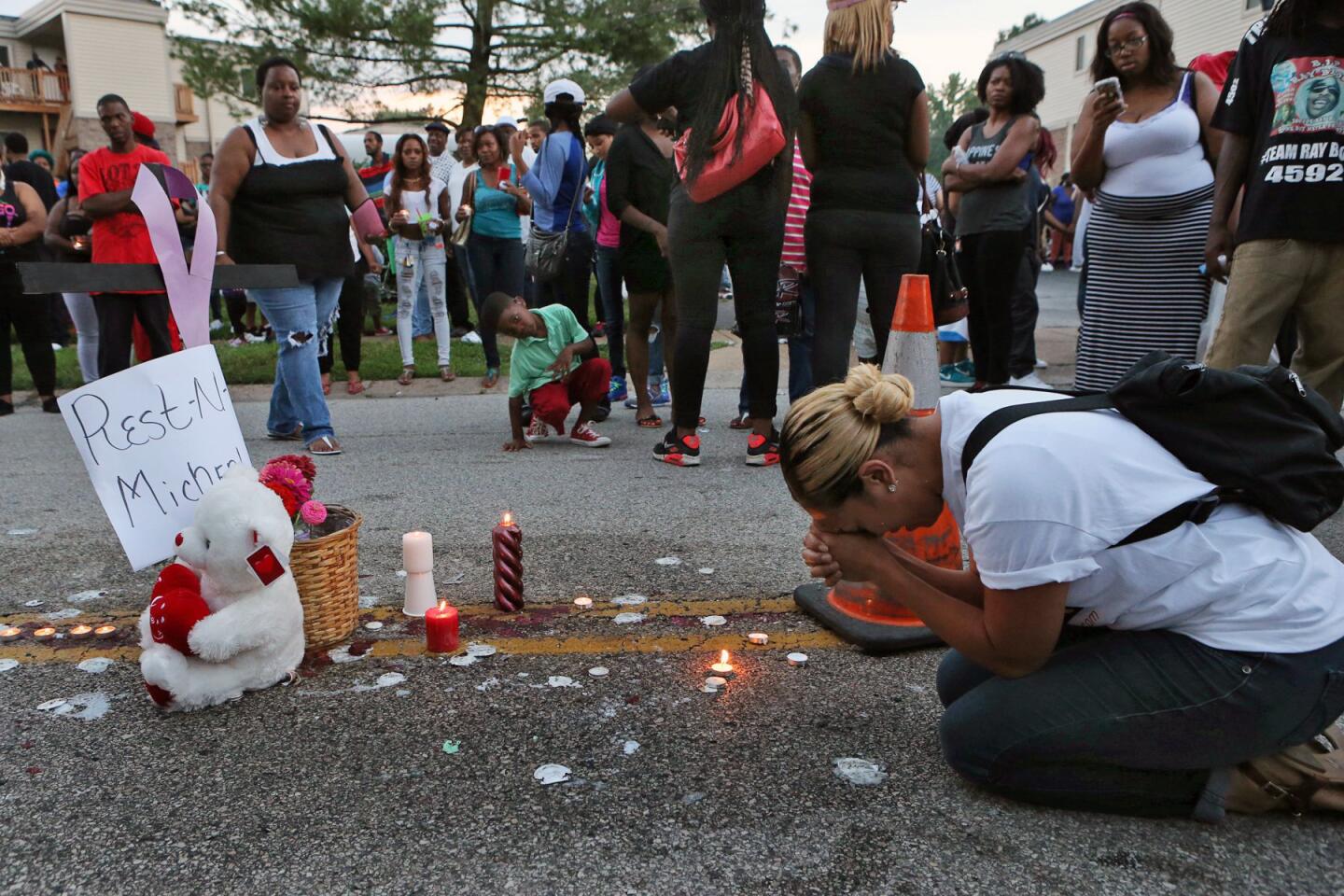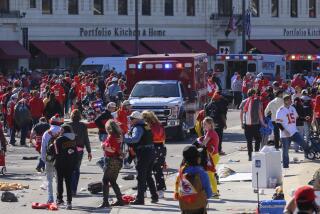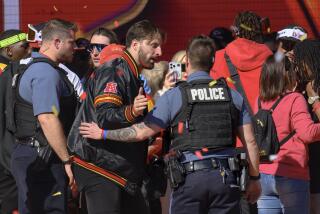Justice Department questions witnesses in Ferguson shooting
The Justice Department is pushing ahead with a possible federal criminal prosecution of the officer who shot an unarmed black man in Ferguson Mo., where peaceful protests were taking place Thursday evening under the new direction of the Missouri State Highway Patrol.
Hoping to bring “a softer front” to the law enforcement presence in Ferguson after five nights of clashes between police and protesters, Missouri Gov. Jay Nixon said that the highway patrol would take over directing security in the city. His announcement came hours after President Obama sought to calm the racially tense situation.
Capt. Ronald Johnson, who grew up in the community, will oversee the protests and said “it means a lot to me personally that we break this cycle of violence.”
“Ferguson will not be defined as a community that was torn apart by violence, but will be known as a community that pulled together to overcome it,” Nixon said at a news conference.
By early evening in Ferguson, dozens of people had assembled in one gathering, holding signs and writing on the sidewalk in chalk near the QuikTrip store in Ferguson that on Sunday was looted and set on fire.
The Ferguson and St. Louis County police departments had been the lead law enforcement presence in the St. Louis suburb since Saturday’s fatal shooting of Michael Brown, an unarmed 18-year-old. Clashes between law enforcement officers and protesters intensified as the week wore on, and the heavy police response included the use of armored vehicles, tear gas and rubber bullets. On Wednesday night, two journalists were detained.
The aggression had not been one-sided, Ferguson Police Chief Thomas Jackson noted, saying at a news conference that protesters had directed gunfire and firebombs toward police. He cited two officers with minor injuries, one of whom was hit with a brick and suffered a broken ankle.
The highway patrol has had a presence in Ferguson already: Before Nixon’s announcement, a patrol spokesman said the agency had 50 to 60 officers, including two SWAT teams, in the city this week.
Meanwhile, FBI and Justice Department investigators from St. Louis and Washington have already spoken with key witnesses who saw a Ferguson police officer kill Brown, Atty. Gen. Eric H. Holder Jr. said Thursday. He pledged that the investigation to determine whether criminal charges would be filed would be “thorough and fair,” but cautioned that the review would “take time to conduct.”
Holder did not discuss the substance of the witness interviews, but his statement was a sharp departure from the silence of local officials, who have refused to discuss any aspect of their investigation and declined to name the officer who fired the fatal shots.
Earlier on Thursday, Obama said there was “no excuse” for “excessive force” by police or for looting or violence aimed at law enforcement. Obama said the police had a responsibility to be “open and transparent” about the events that led up to the shooting of Brown.
The Ferguson police chief said he was also working to de-escalate any tensions between officers and demonstrators.
“What is happening now is not what any of us wants,” Jackson said at a news briefing, adding that officers and community leaders are planning to better “facilitate” demonstrators’ right to rally.
Sen. Claire McCaskill (D-Mo.) told reporters Thursday that although she backed the decision by law enforcement authorities to not release details of the Brown case, the strong police response to protests in Ferguson had become a problem.
“I think the demilitarization of the response is going to help a lot” to ease strife in the suburb, she said. When asked about community tensions, she described the problems as “a wound that’s not going to heal overnight.”
The ACLU of Missouri filed a lawsuit Thursday to obtain copies of initial police reports regarding Brown’s shooting after St. Louis County police rejected the group’s open-records request for the incident report.
At a community meeting Thursday morning, dozens of beleaguered residents and community leaders filled the pews at the Christ the King United Church of Christ in neighboring Florissant, and it didn’t take long for the grievances to pour out.
Although they were upset over the shooting, community members — especially the parents of young children — indicated their primary concern had become the police response to the demonstrations that followed.
Sierra Smith, 27, lives in the Canfield apartment complex not far from where Brown was shot and where many of the worst clashes with police have occurred. Speaking into a microphone, she described how at night the police had blocked the streets to the apartment complex, making it almost impossible for residents to get in or out.
When a neighbor ran out of formula and diapers for her newborn, Smith said, the police blocked them from going out for more.
“We get up to the top of the street and they tell us to turn around,” Smith said. “If you go out, you better be wearing the armor of God.”
Others expressed disgust for white out-of-towners who were seen lighting trash bins on fire and carrying Molotov cocktails. The Sunday looting and vandalism that shut down neighborhood stores was also stopping residents from doing needed errands.
Traci Blackmon, one of the organizers of the meeting, said: “I got calls that people don’t have toiletries. People don’t have food.”
Tremaine Combs, 32, said fear had infected his 5-year-old son in recent days. As they were leaving a nearby Walgreens on Wednesday evening, he said, his son spotted a police officer driving by. “He was so terrified that he started crying,” Combs said.
On Wednesday night, armored personnel carriers and officers wearing body armor and carrying assault rifles had greeted demonstrators. After ordering the crowd to disperse, officers unleashed tear gas and rubber bullets, witnesses said.
Police sealed off the area that was the scene of vandalism and looting Sunday night. At least 10 people were arrested.
One of them was St. Louis Alderman Antonio French, according to a Twitter post by friend Liz Peinado. During the unrest, French has posted videos on social media of protests and the police presence on the streets. His arrest could not be independently confirmed late Wednesday.
During the nighttime confrontation, protesters with shirts wrapped around their faces held signs that read, “Hands up, don’t shoot,” as police closed in on the crowd. The slogan has been adopted by protesters because witnesses have said Brown was running with his hands in the air when a police officer shot him to death Saturday.
In live amateur video posted to social media, police could be heard telling the group to leave the area or they would be arrested. Clouds of tear gas were visible in the background.
St. Louis County Prosecutor Robert McCulloch said Wednesday that details about the Brown shooting would not be released any time soon. He urged anyone with information to come forward and promised that every piece of evidence would be reviewed, presented to a grand jury and eventually made public.
By withholding details from the public during the criminal inquiry, investigators would be better able to gauge witnesses’ credibility, he said.
The St. Louis County Police Department is investigating the shooting, and the FBI and civil rights attorneys from the Justice Department are conducting a parallel investigation.
Racial tension has simmered since Saturday’s shooting, beginning with a protest late that day. Then, Sunday night, vandals rampaged through 12 businesses, burning one and breaking windows.
Ferguson is a working-class suburb of 21,000. Two-thirds of residents are black, but police and city officials are predominantly white.
Although the largest protests have been peaceful, demonstrations have turned ugly at night.
Jackson, the police chief, has said he decided not to identify the officer who killed Brown because a rumor that circulated soon after the shooting that misidentified the officer had prompted death threats. The officer was injured in the confrontation with Brown and the “side of his face was swollen,” Jackson said. The officer was treated at a hospital, the chief said, and was “very shaken.”
The “hacktivist” group Anonymous released what it said was the officer’s name Thursday morning, but Jackson said the report was inaccurate.
Local law enforcement authorities have released few details about the shooting, and several witnesses have disputed the police account.
Brown had been walking in the street with a friend Saturday about noon when, according to police, an officer drove up and tried to get out of his patrol car, and Brown pushed the officer back into the car. After an altercation over the officer’s weapon in the car, the officer and Brown got out of the vehicle, and the fatal shooting occurred, according to St. Louis County Police Chief Jon Belmar.
Bystanders said Brown had raised his hands to surrender when the fatal shots occurred.
Pearce reported from Ferguson, Serrano from Washington, and Raab and Srikrishnan from Los Angeles. Times staff writer Ryan Parker in Los Angeles contributed to this report.
For more news about Ferguson, follow @mattdpearce, @raablauren and @msrikris on Twitter.
More to Read
Sign up for Essential California
The most important California stories and recommendations in your inbox every morning.
You may occasionally receive promotional content from the Los Angeles Times.
